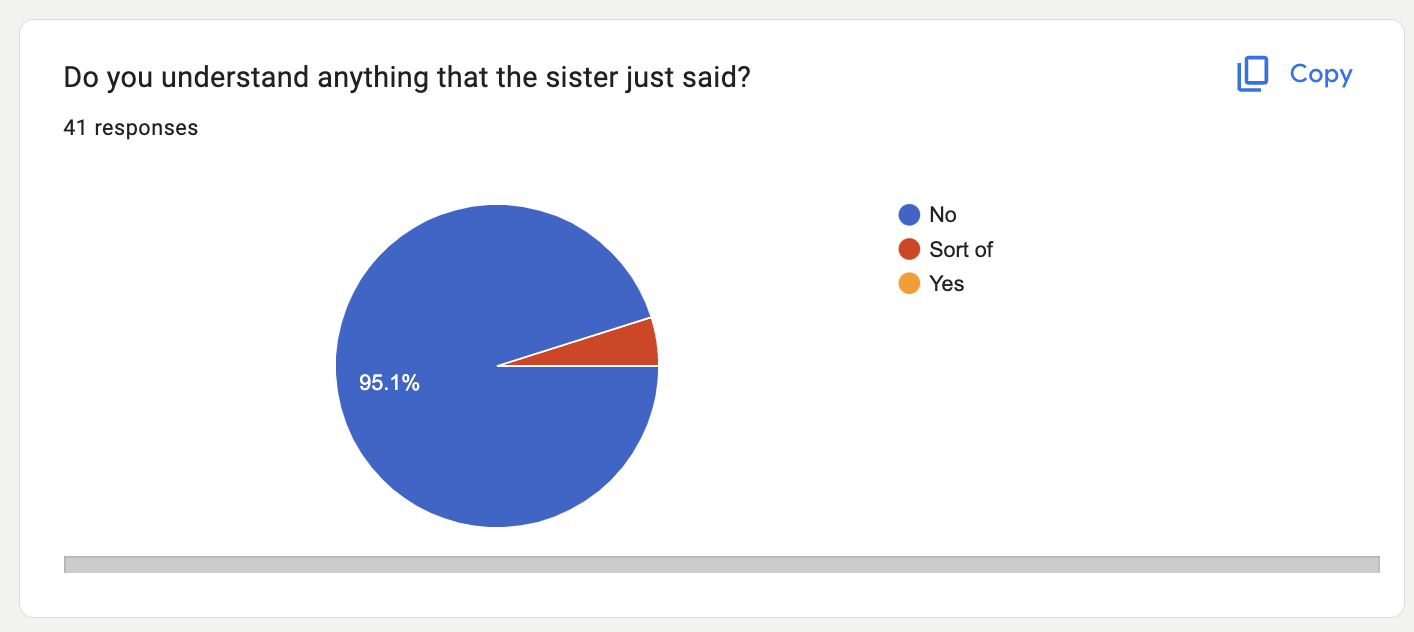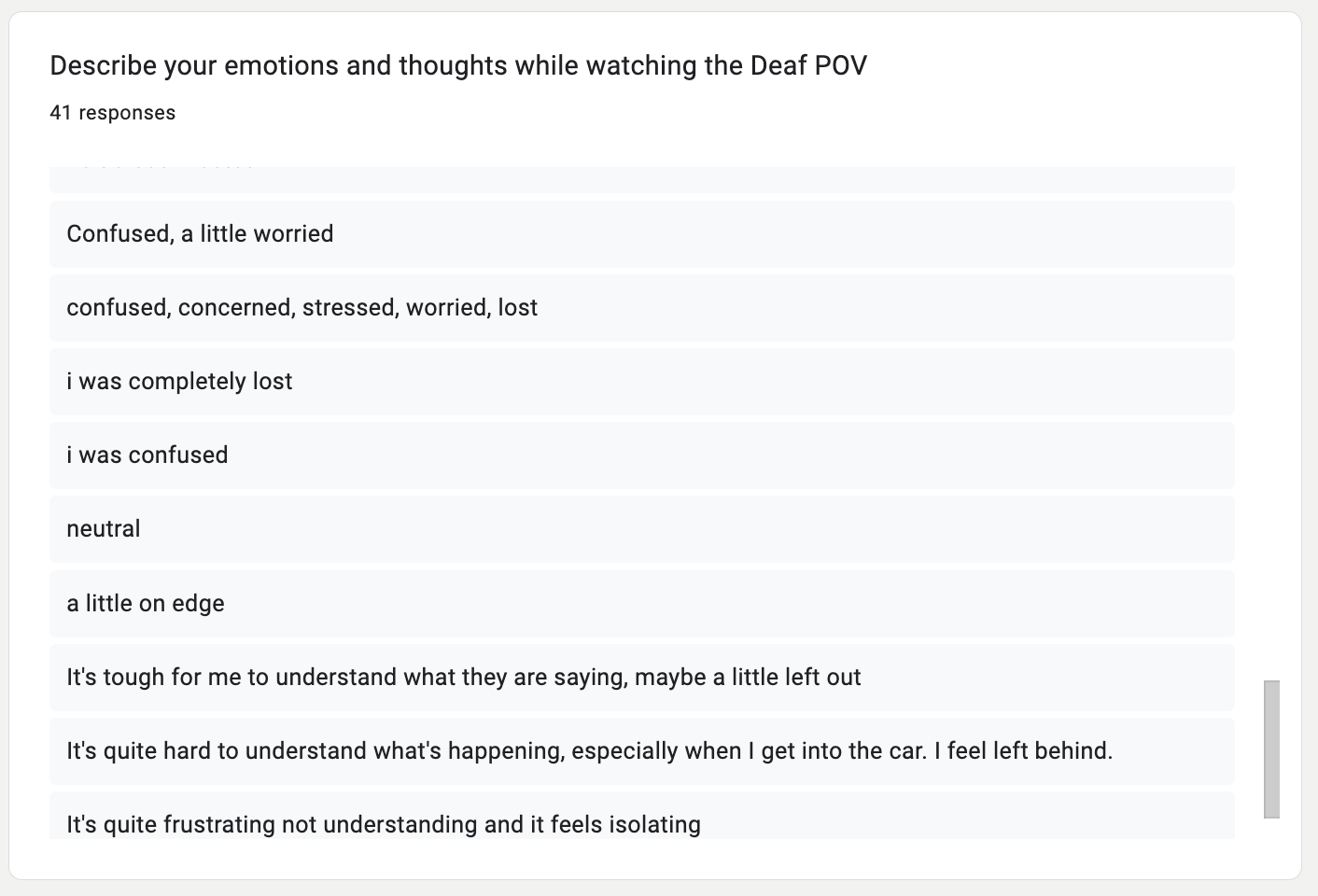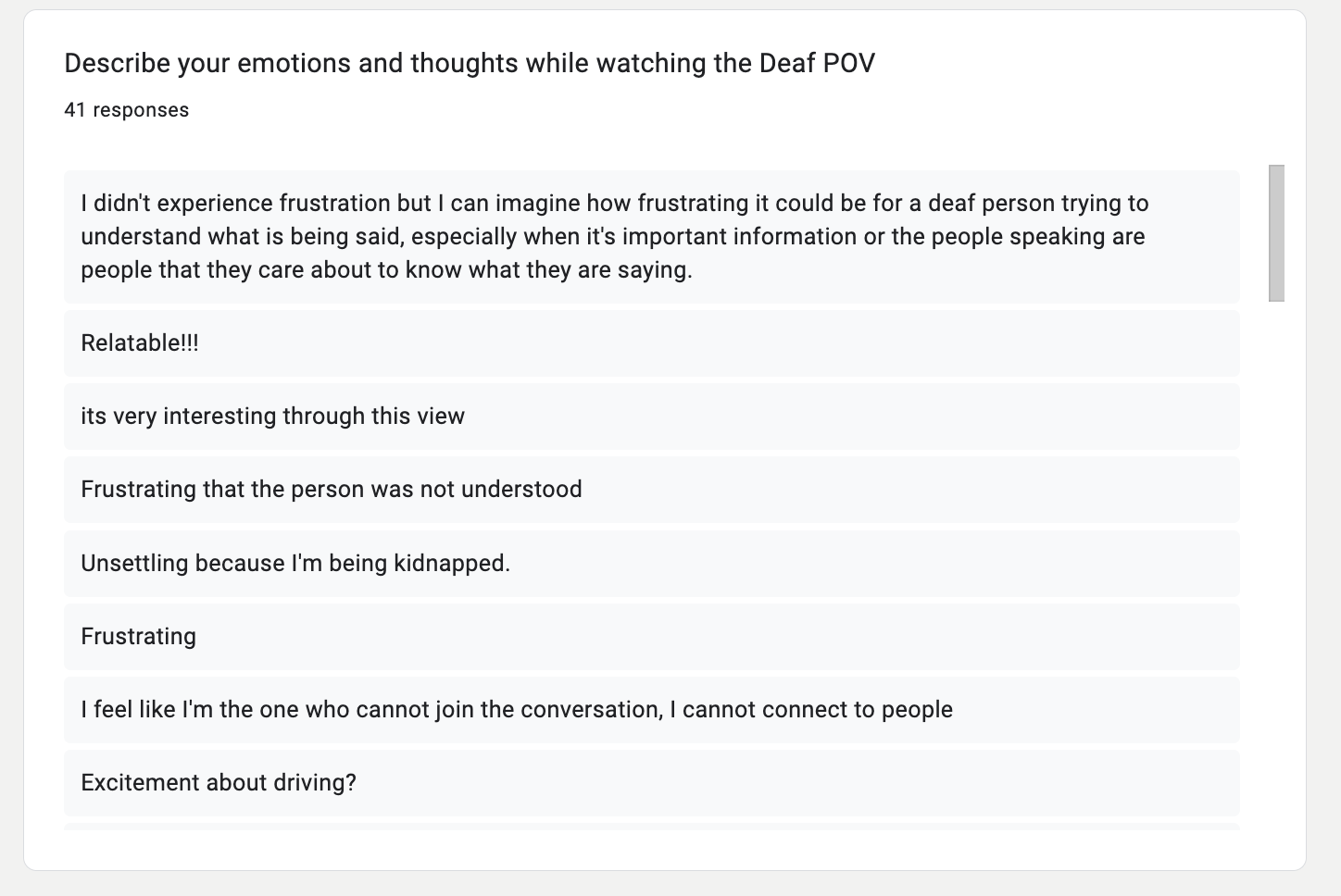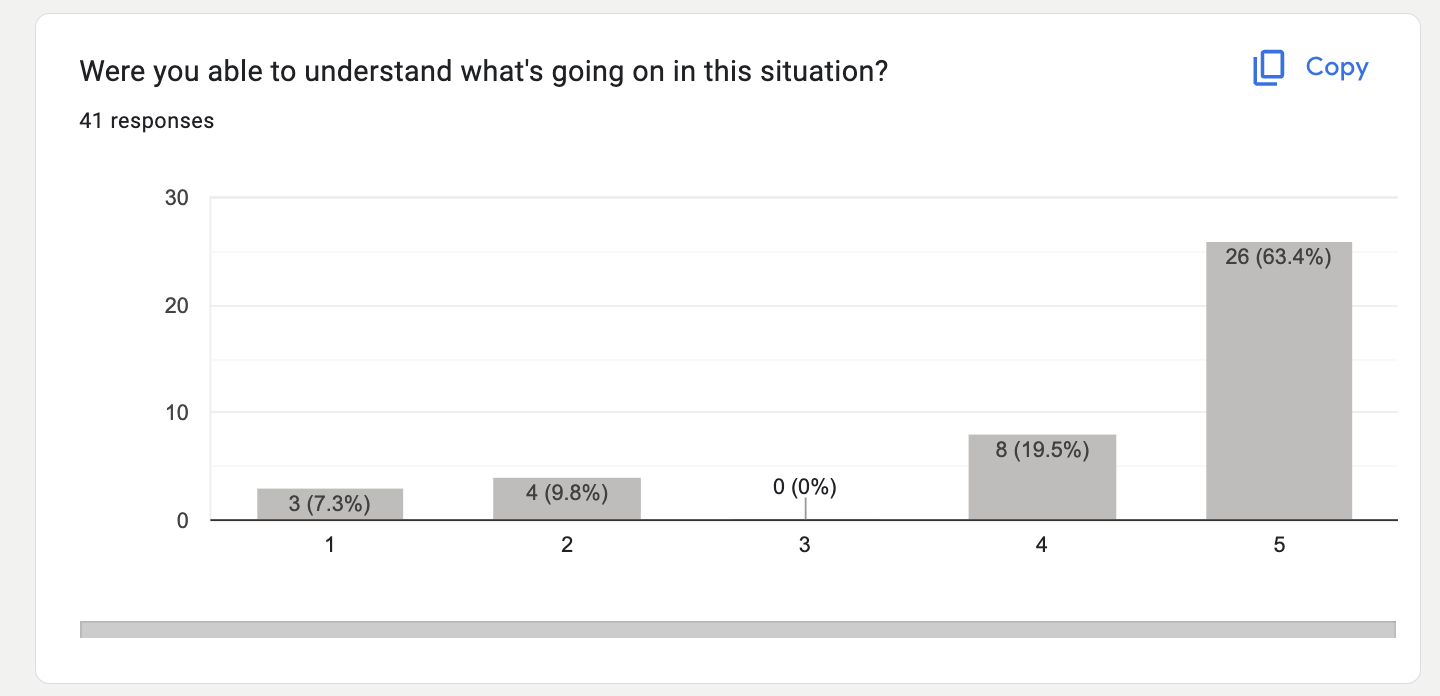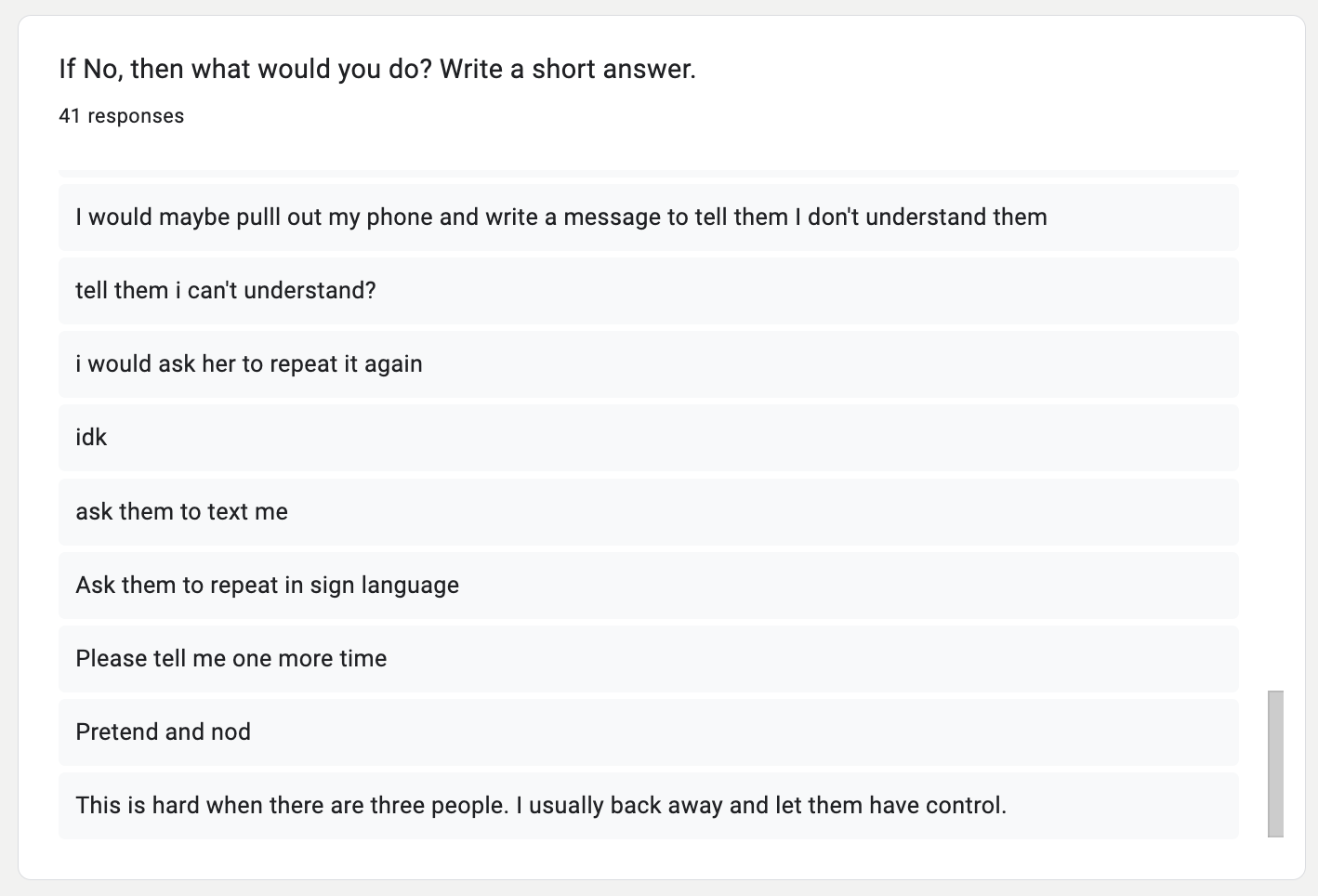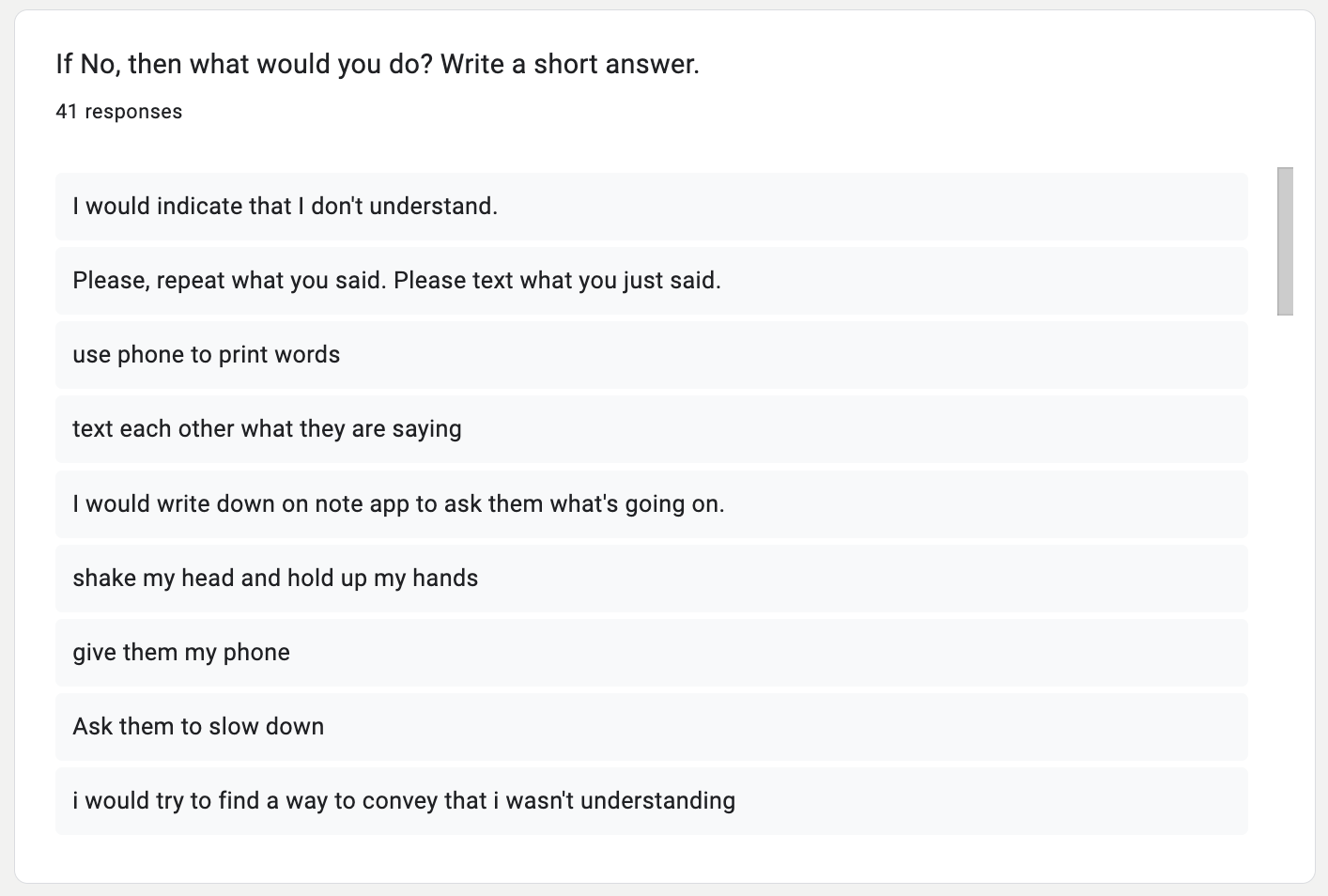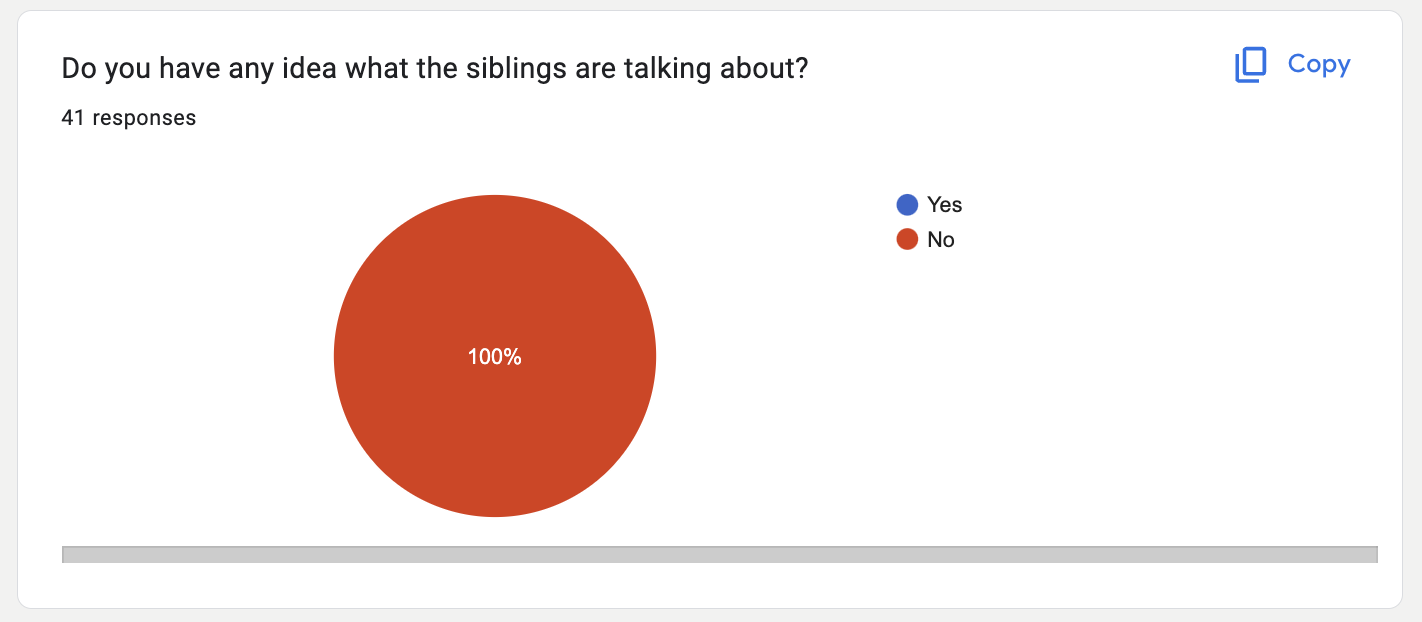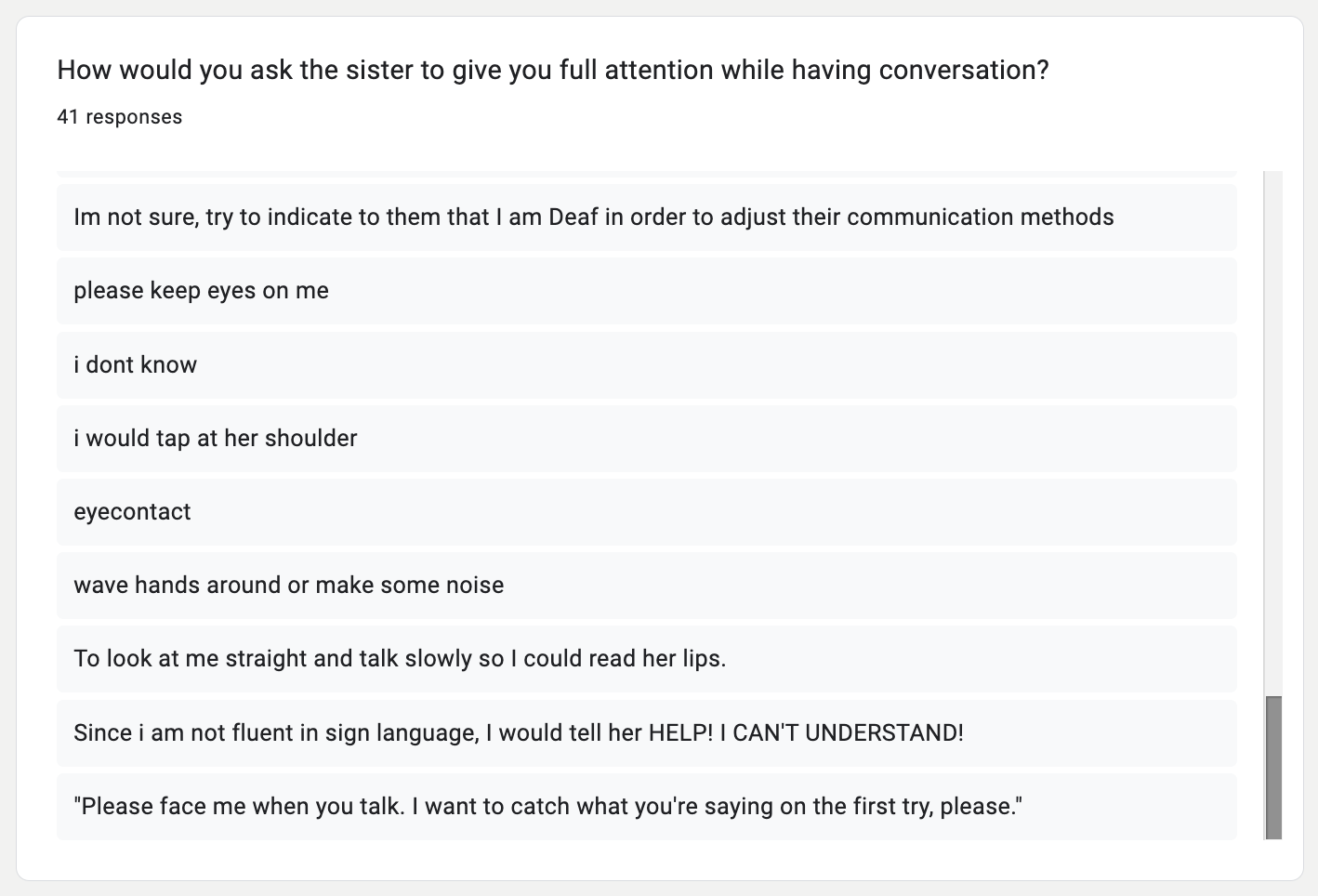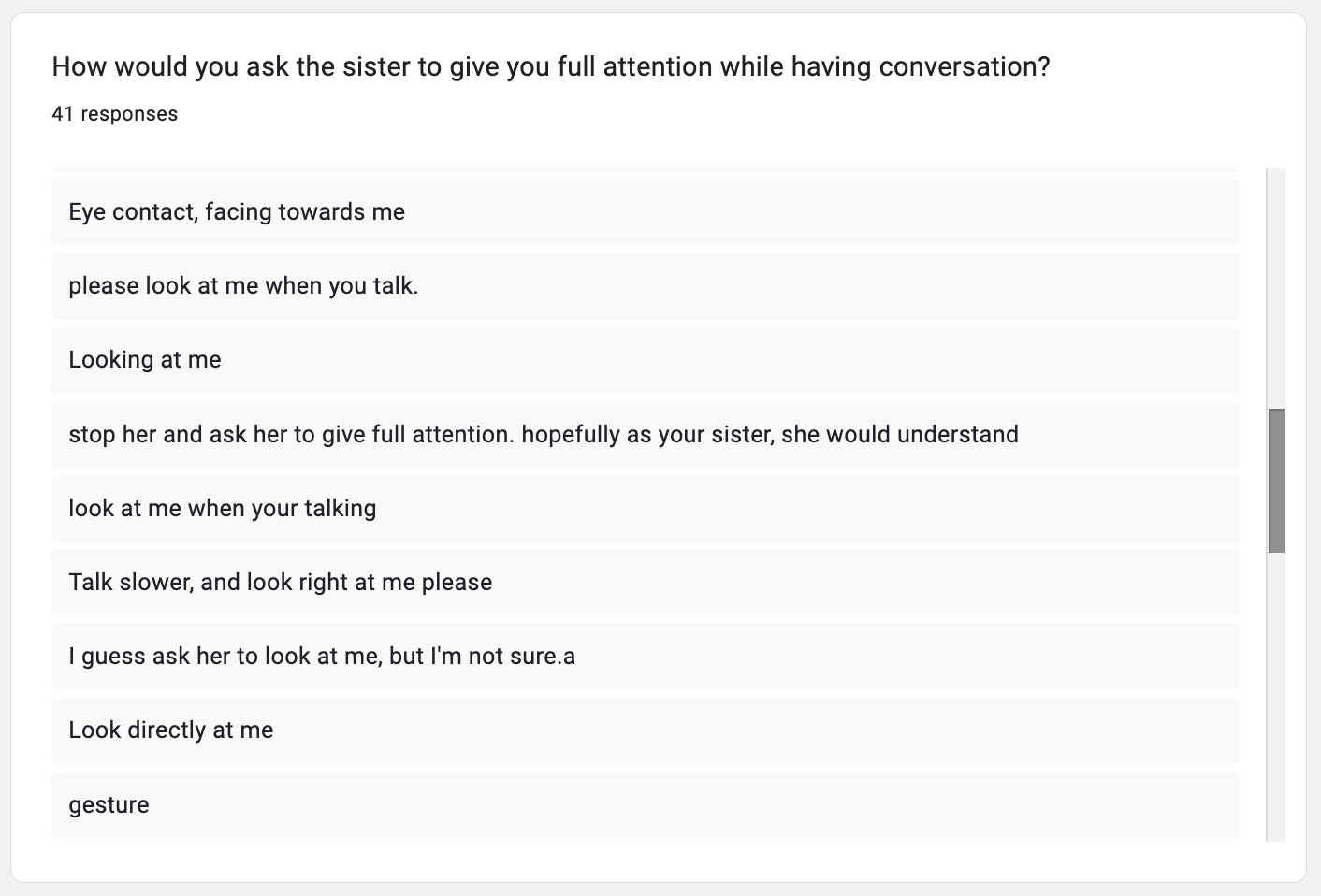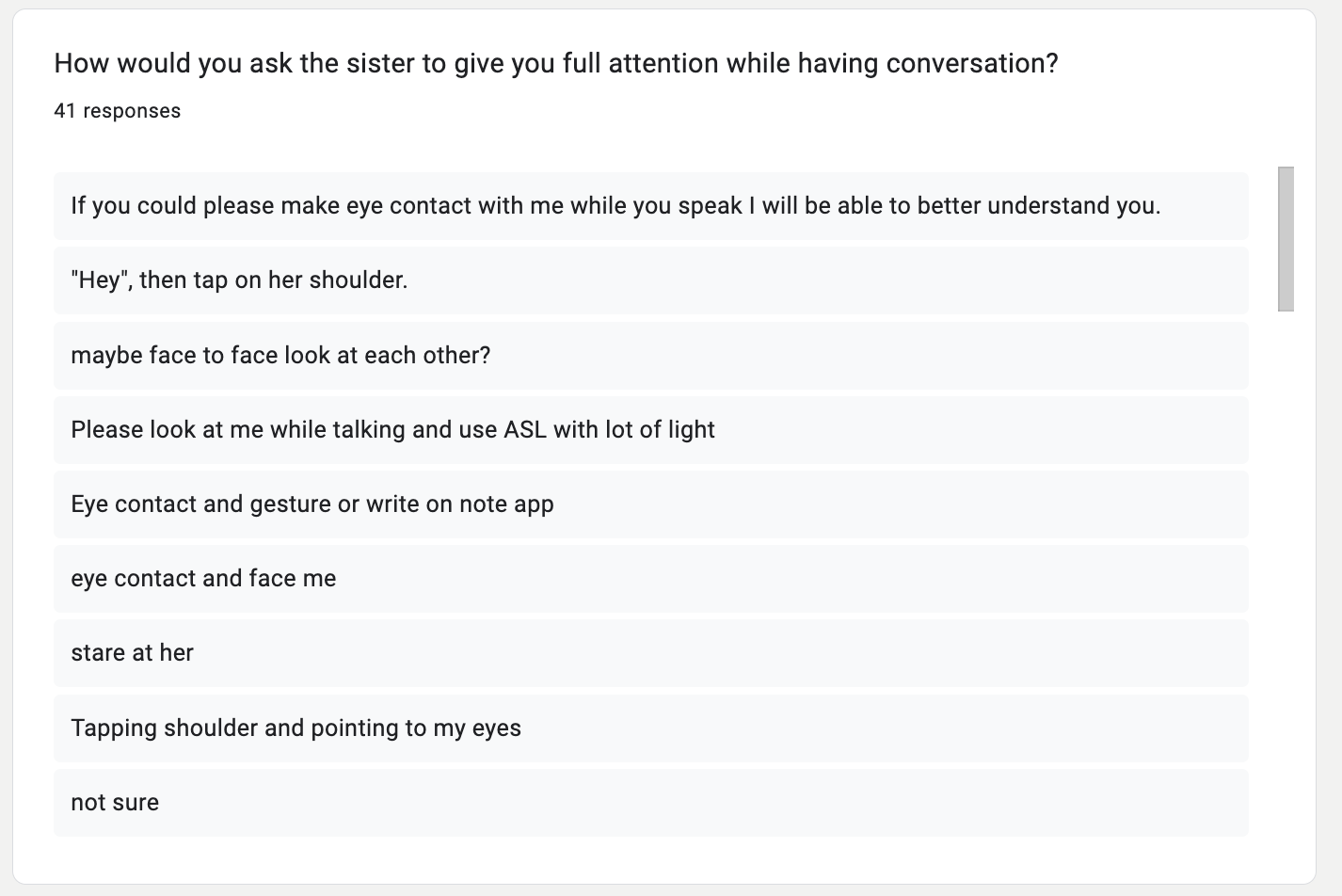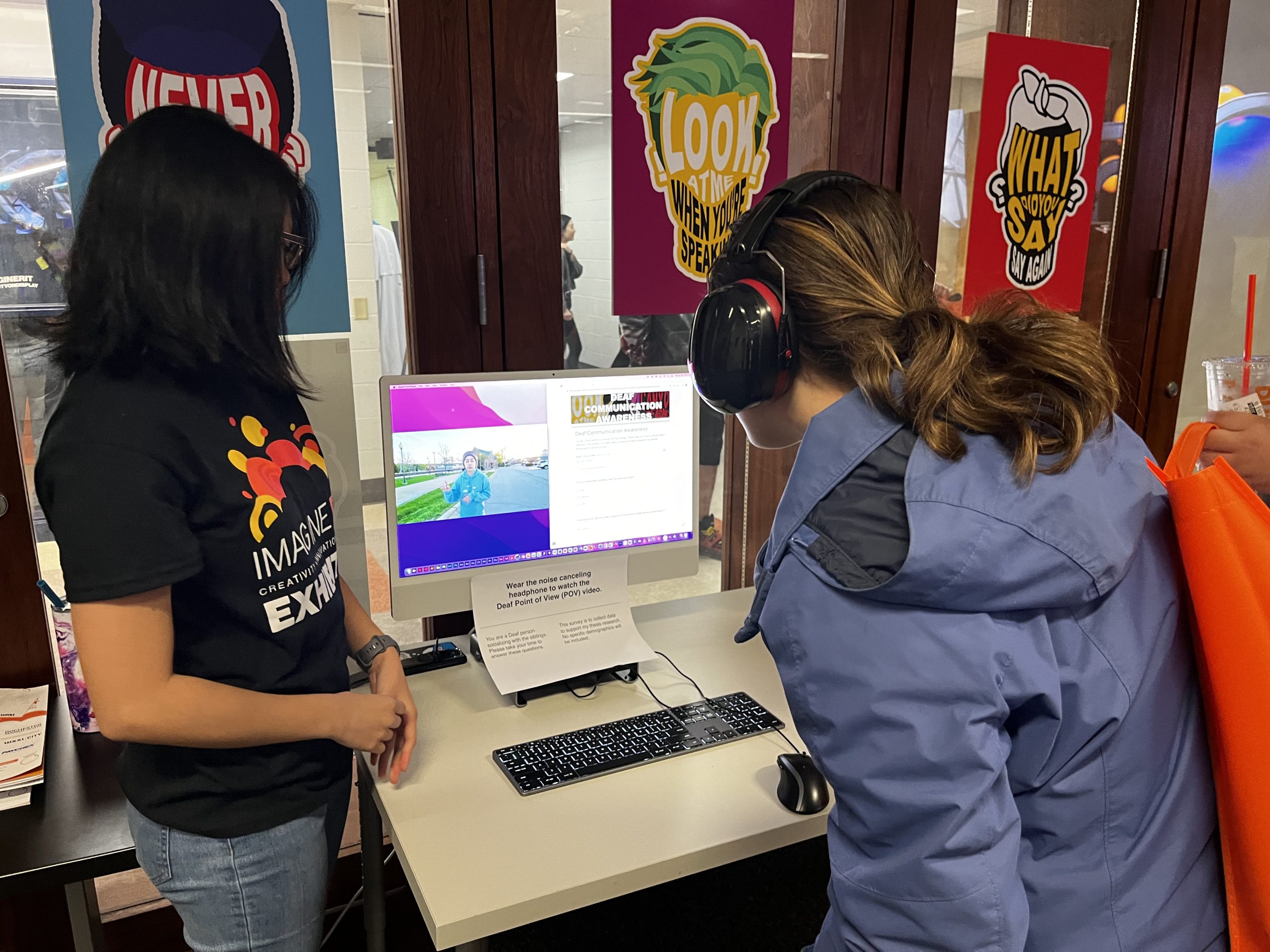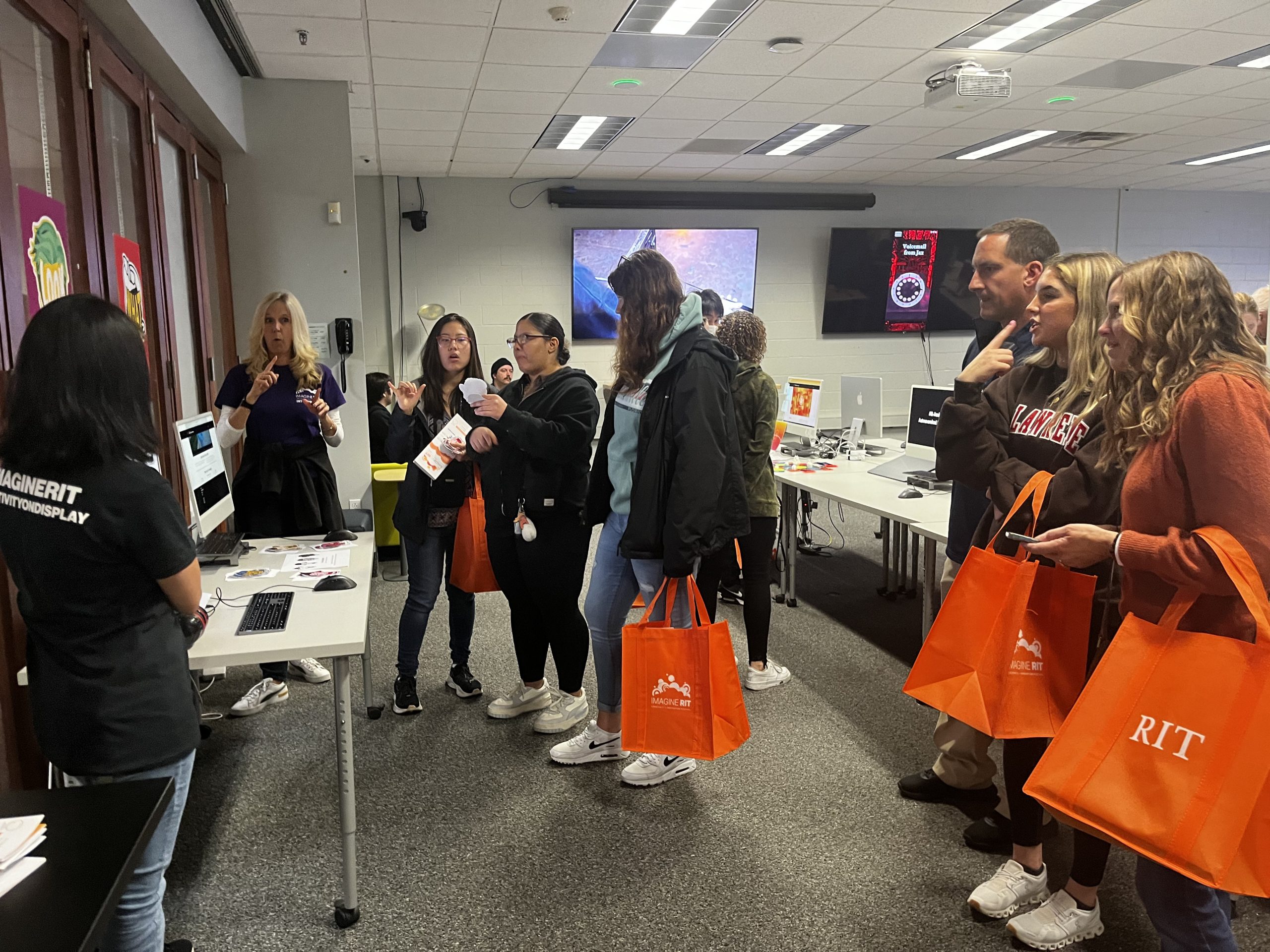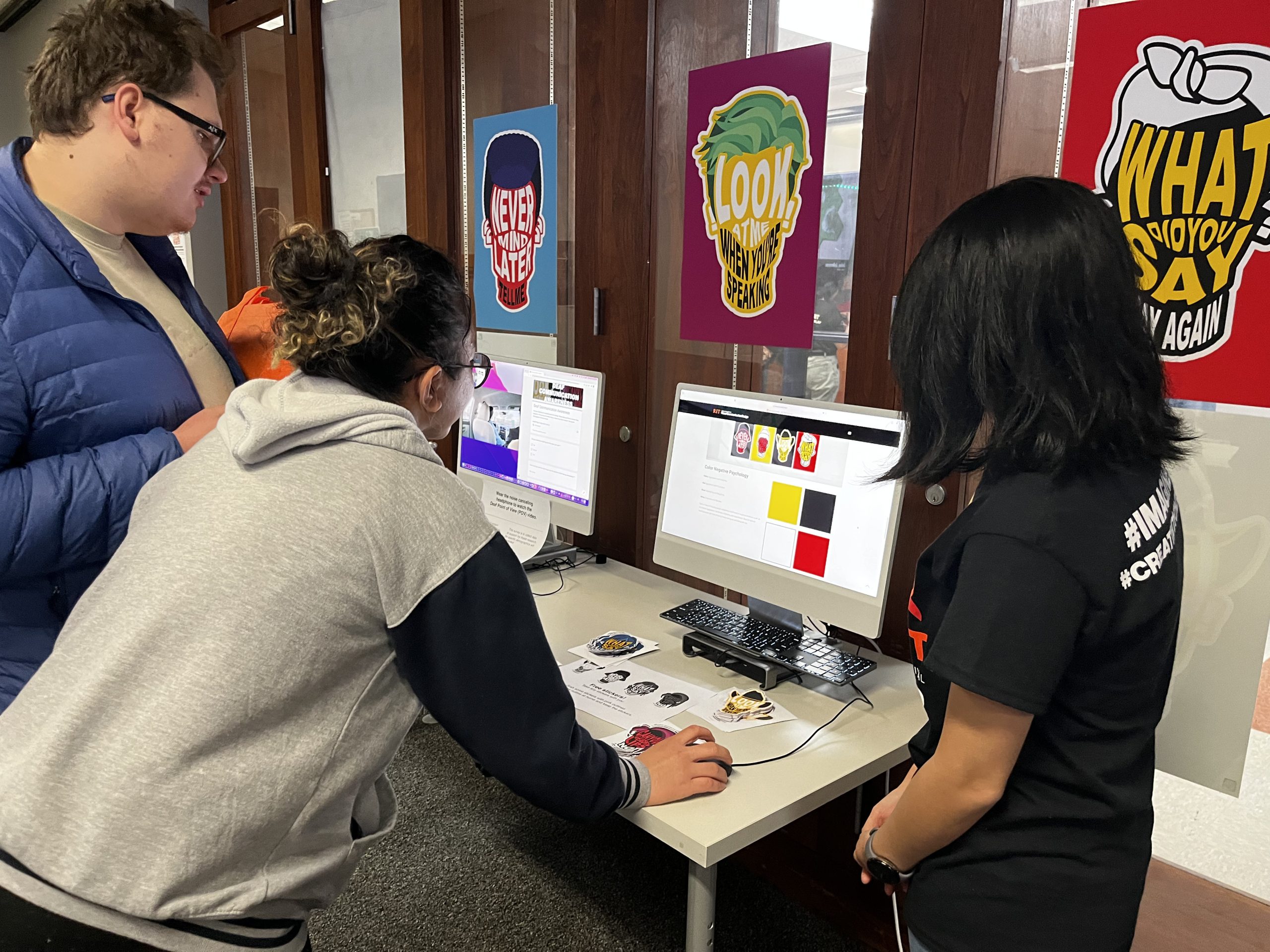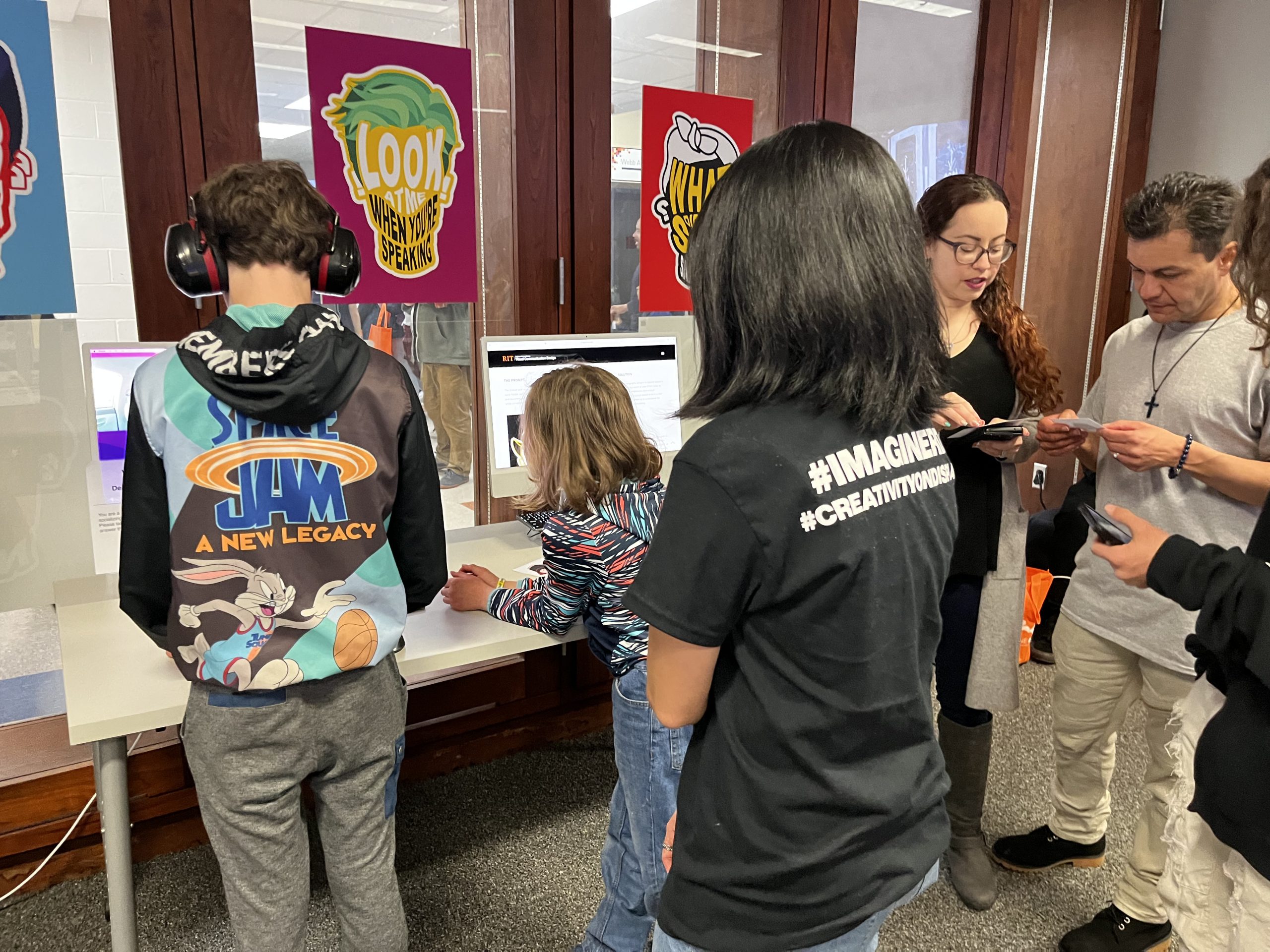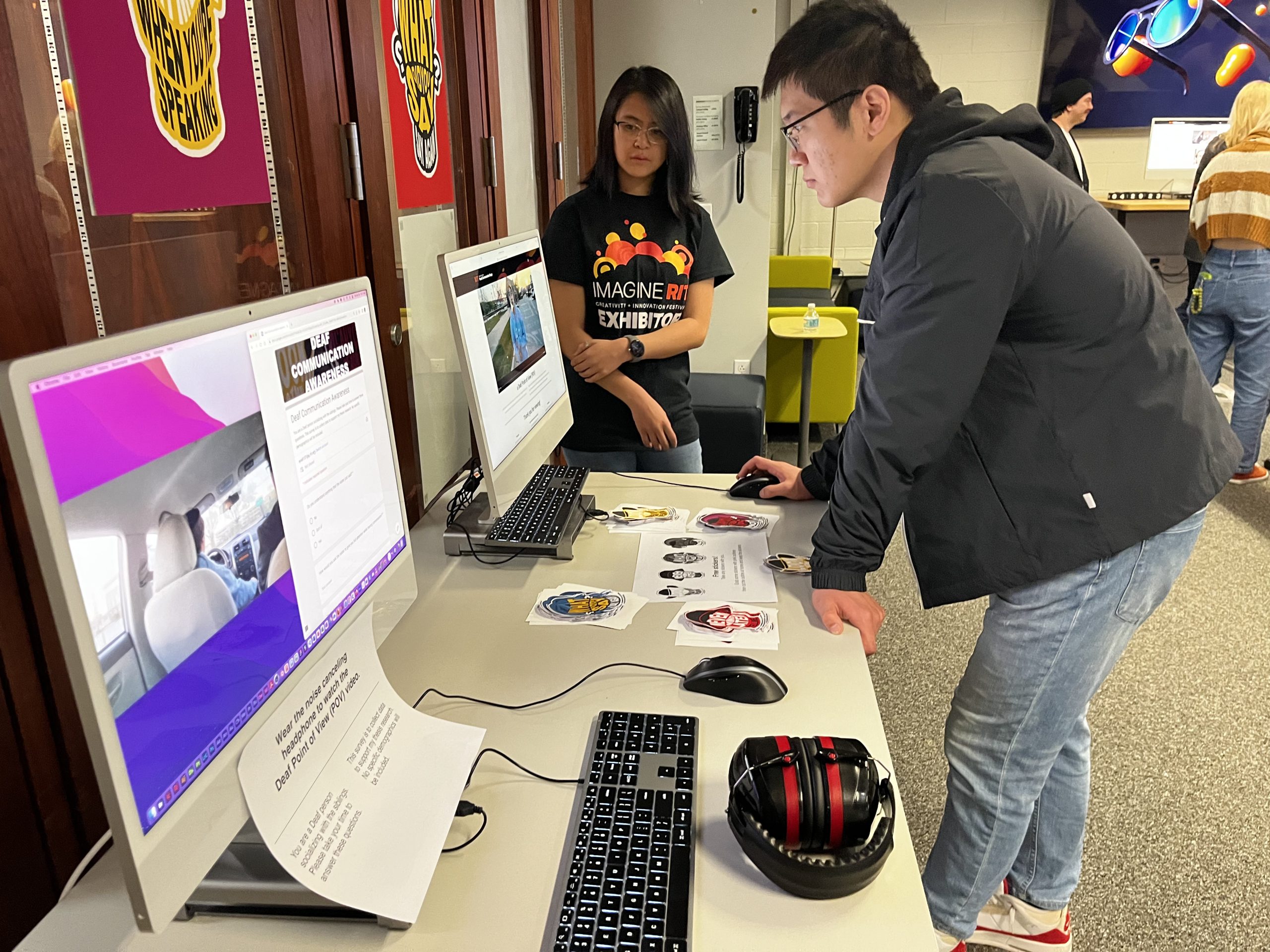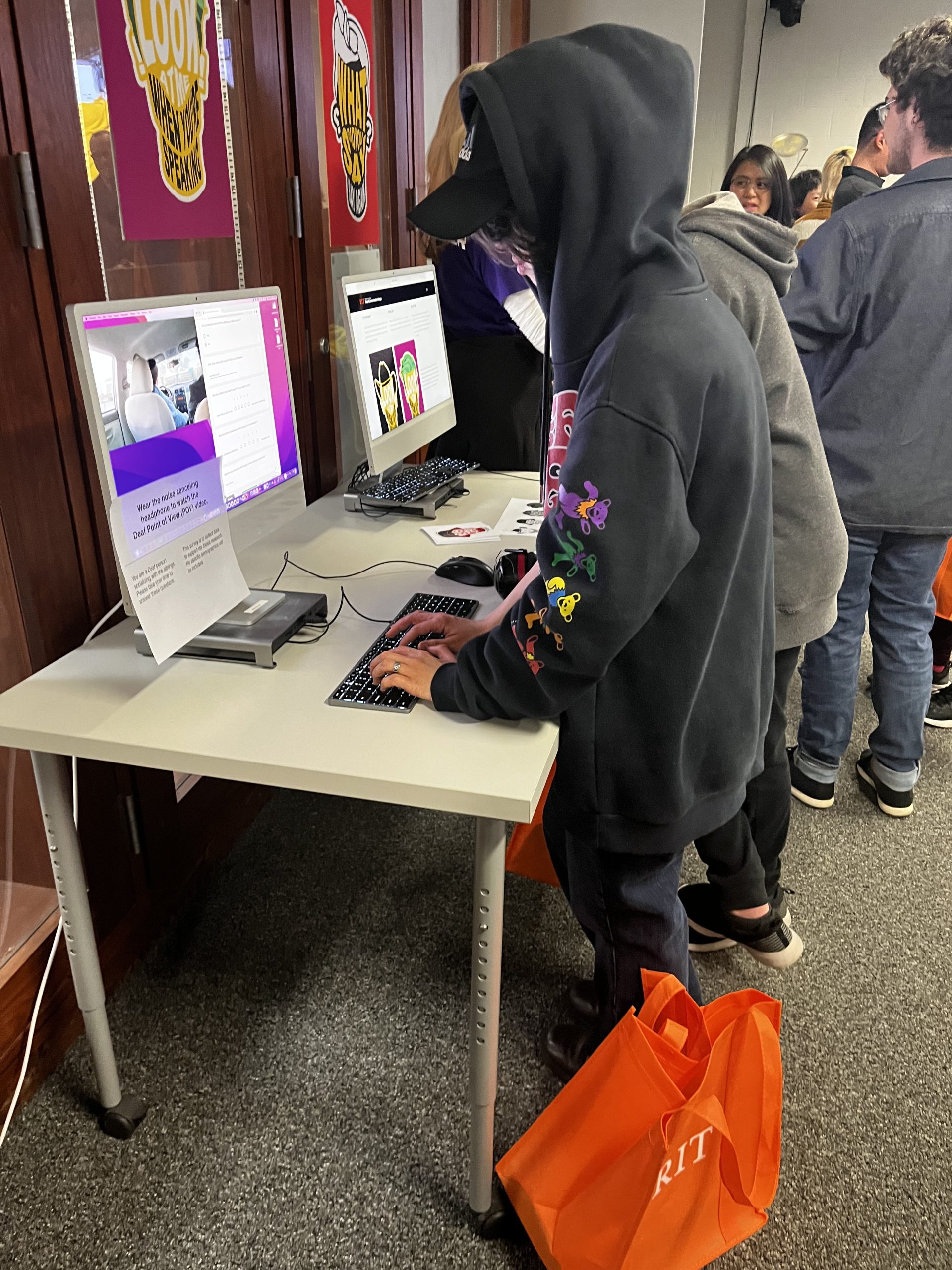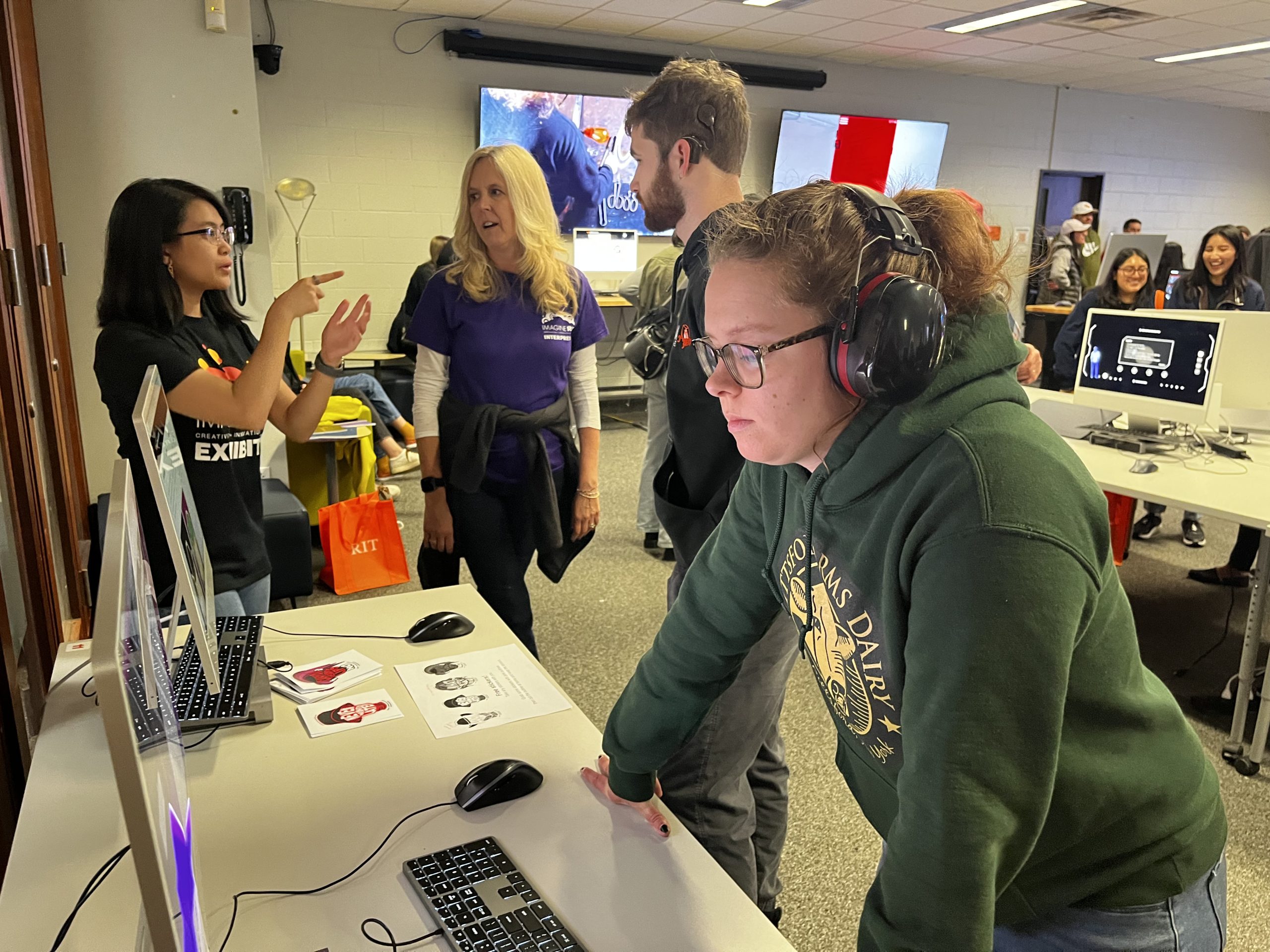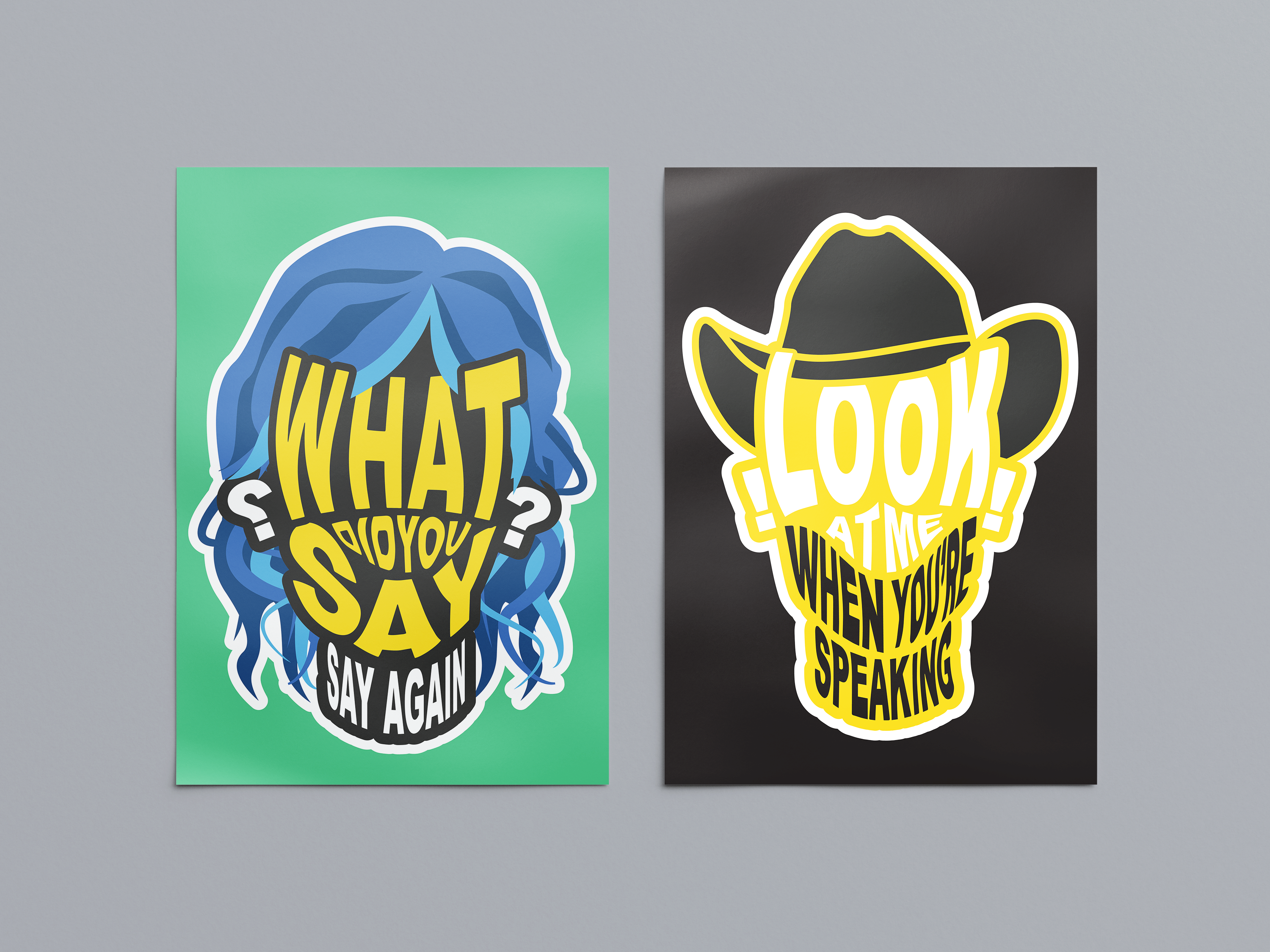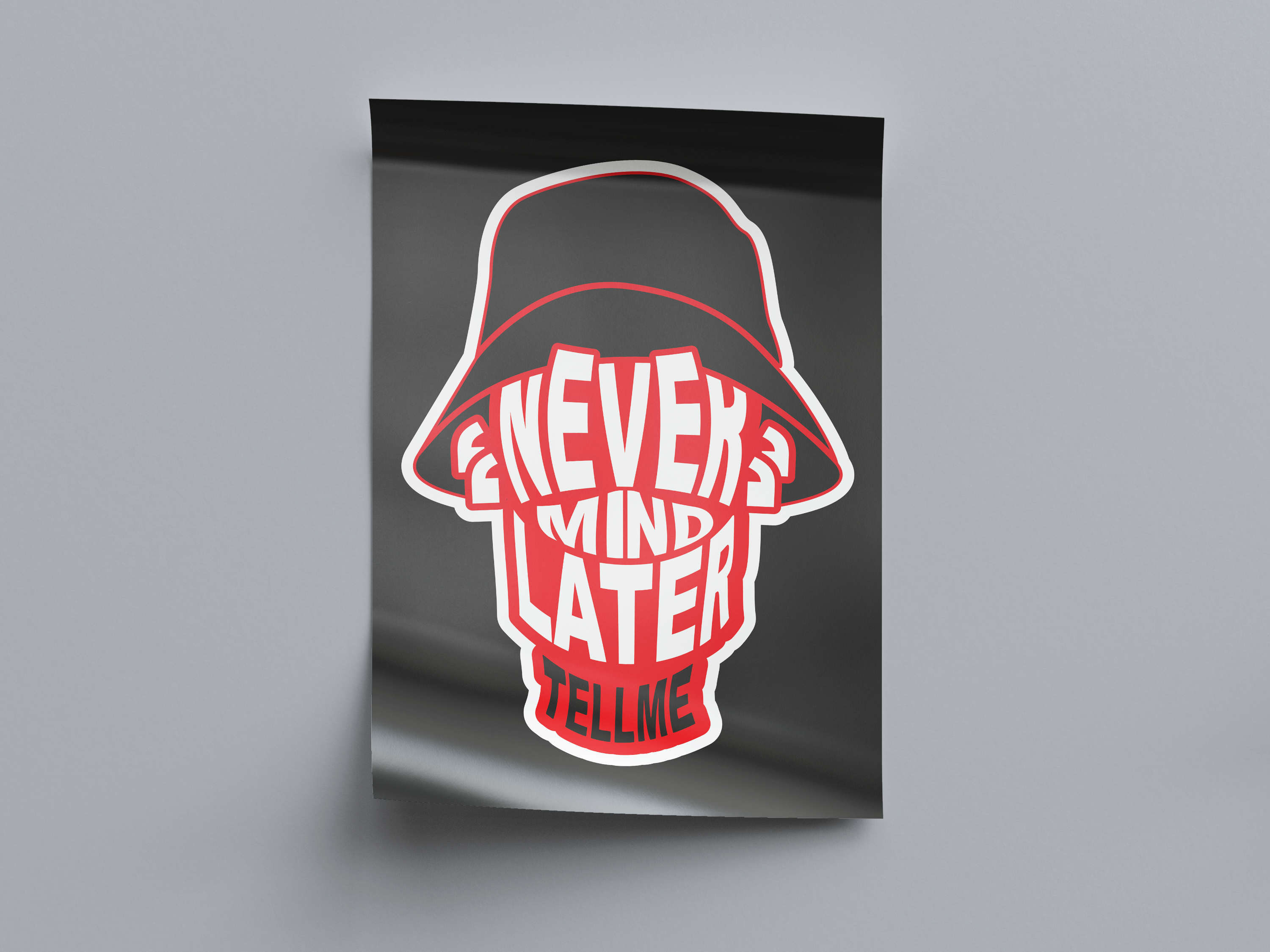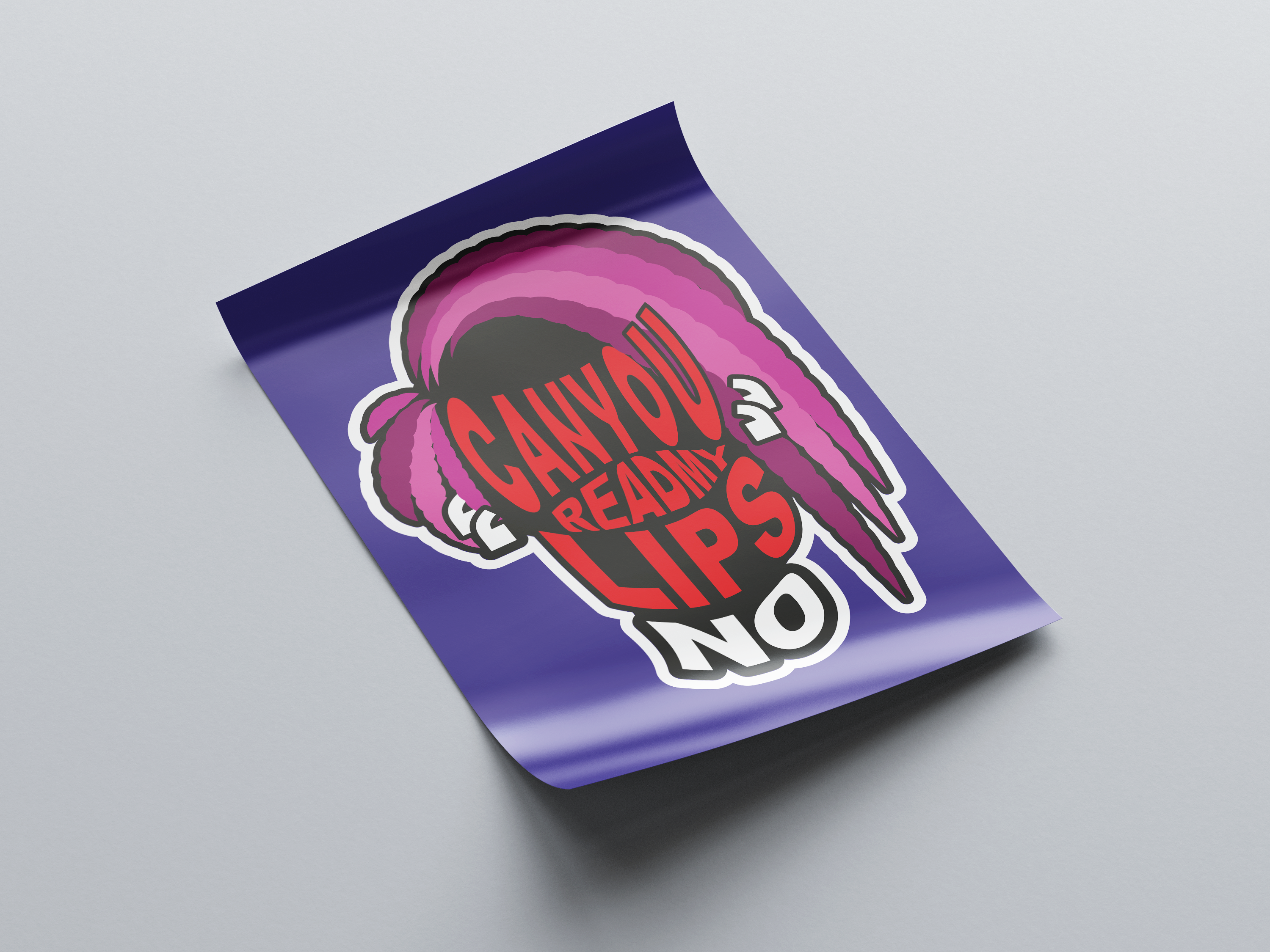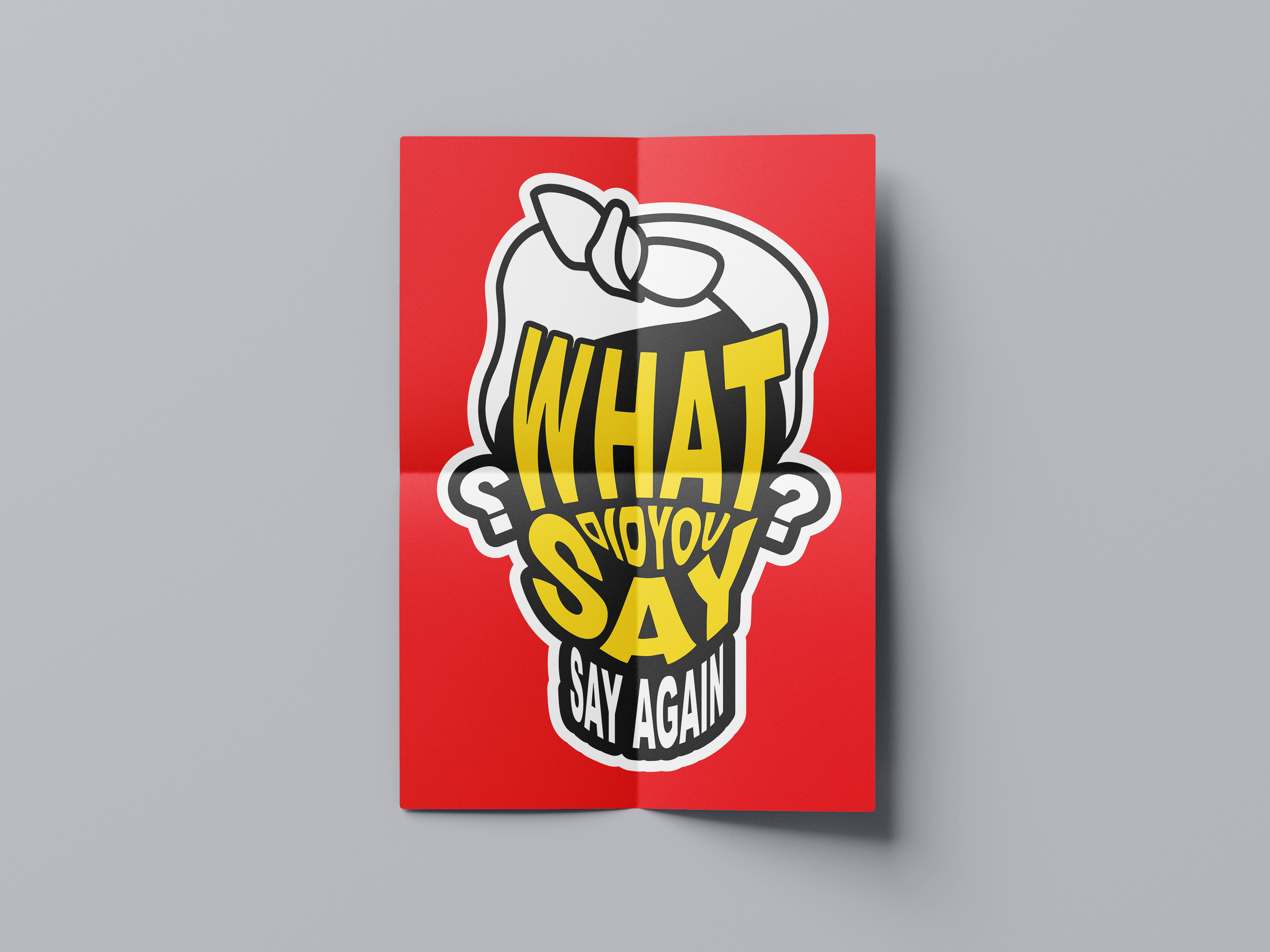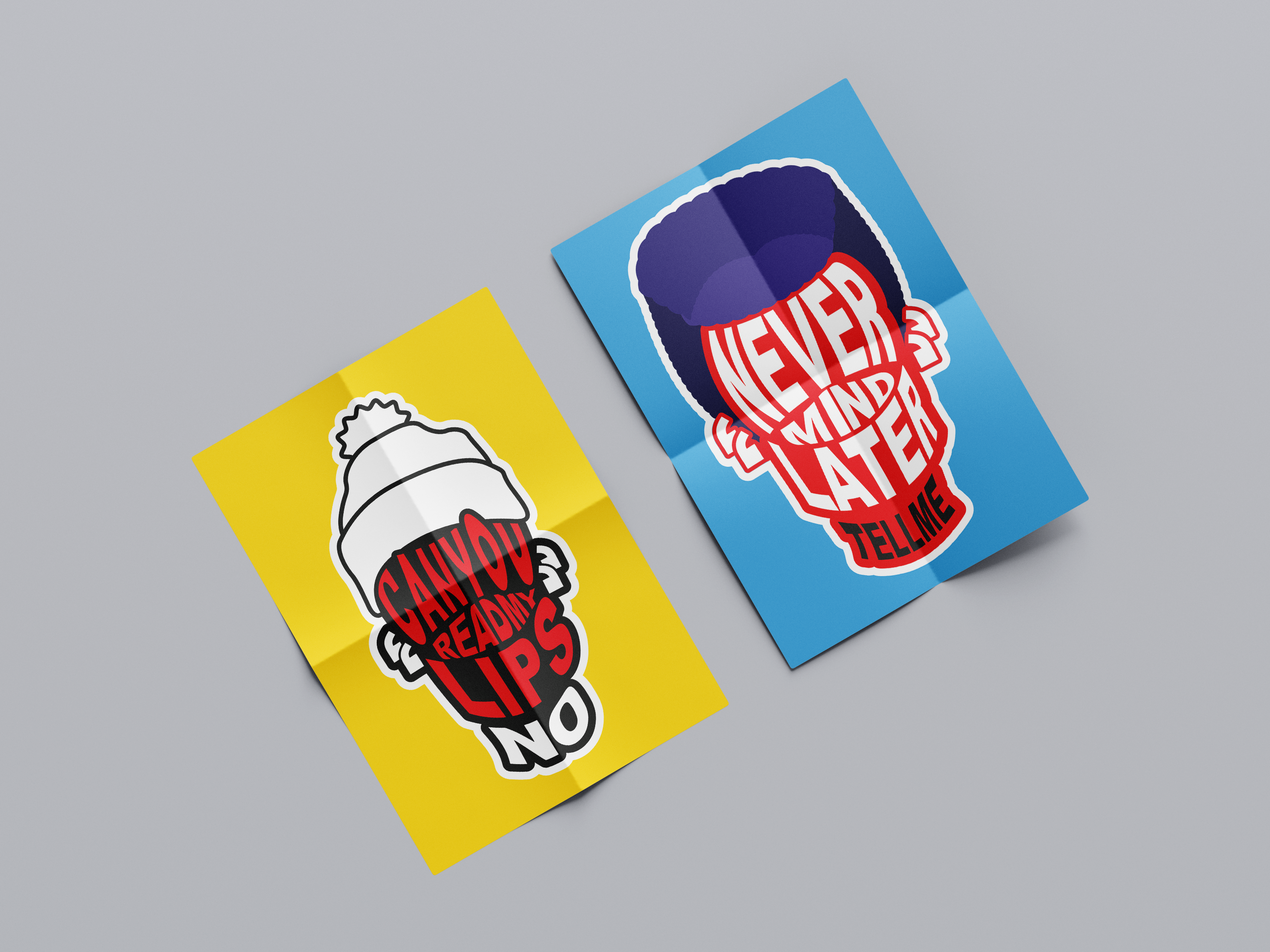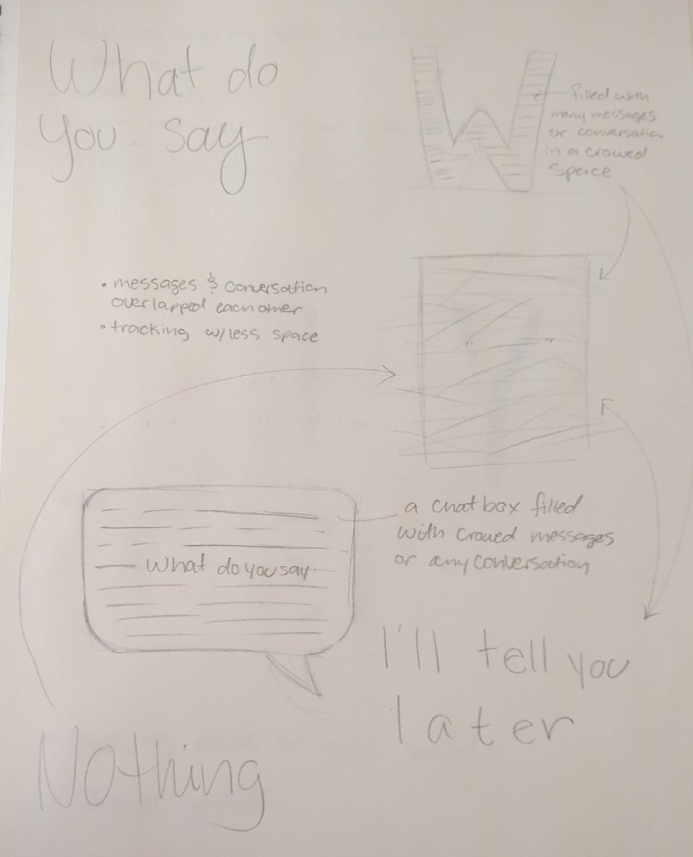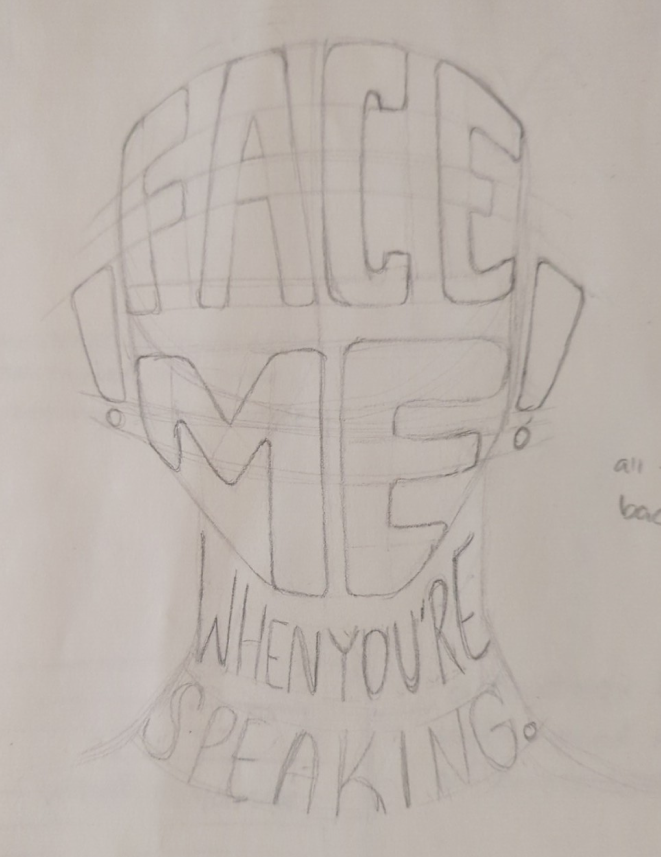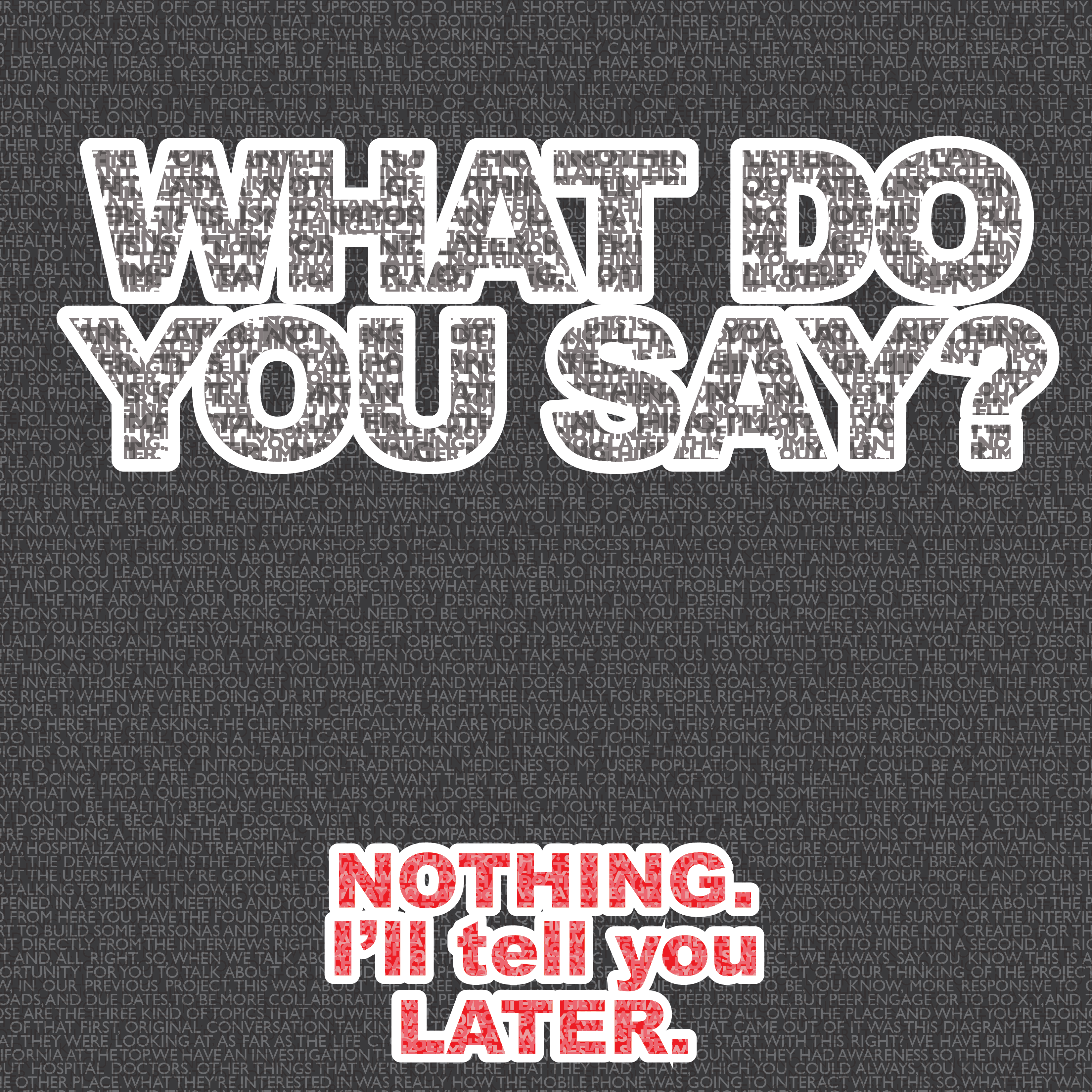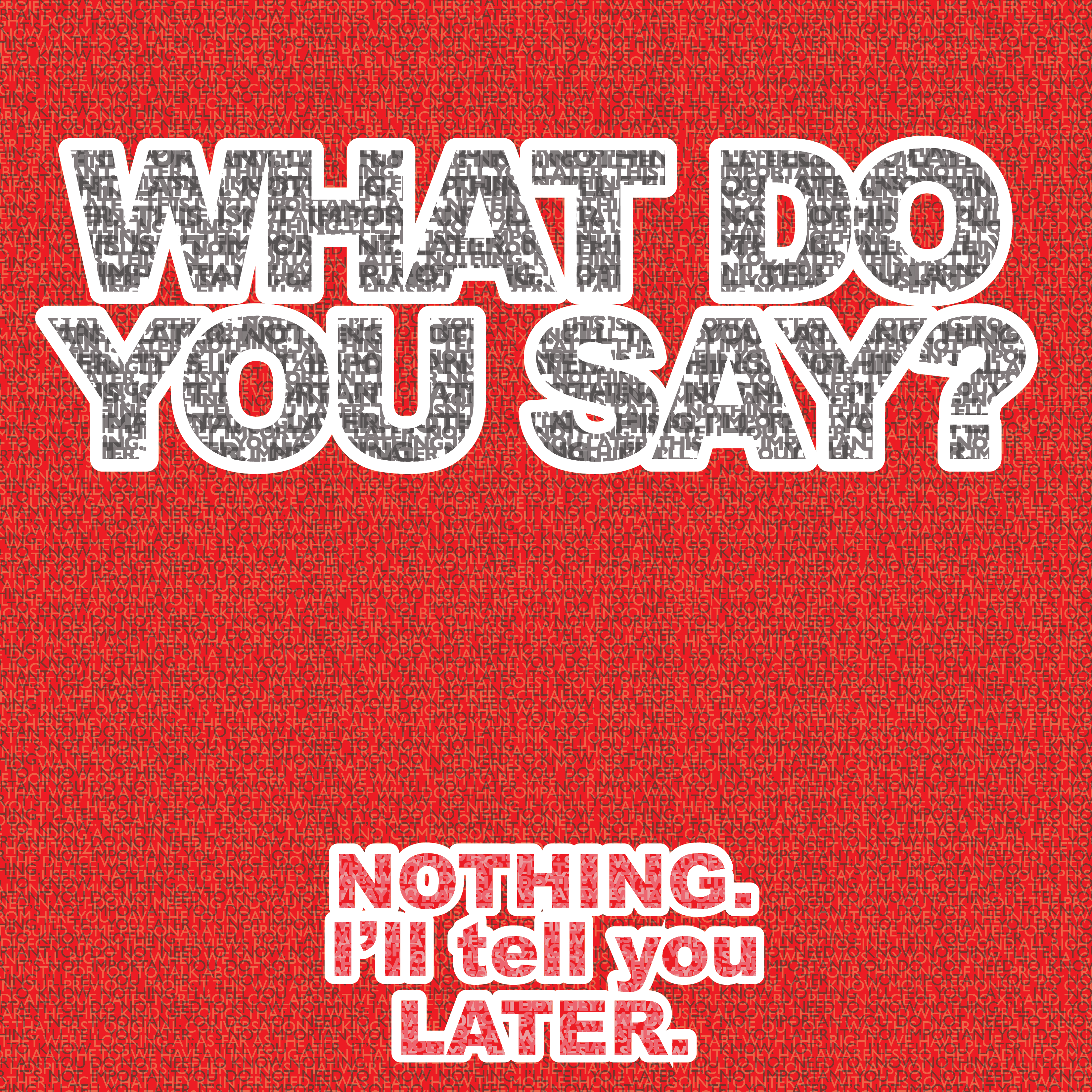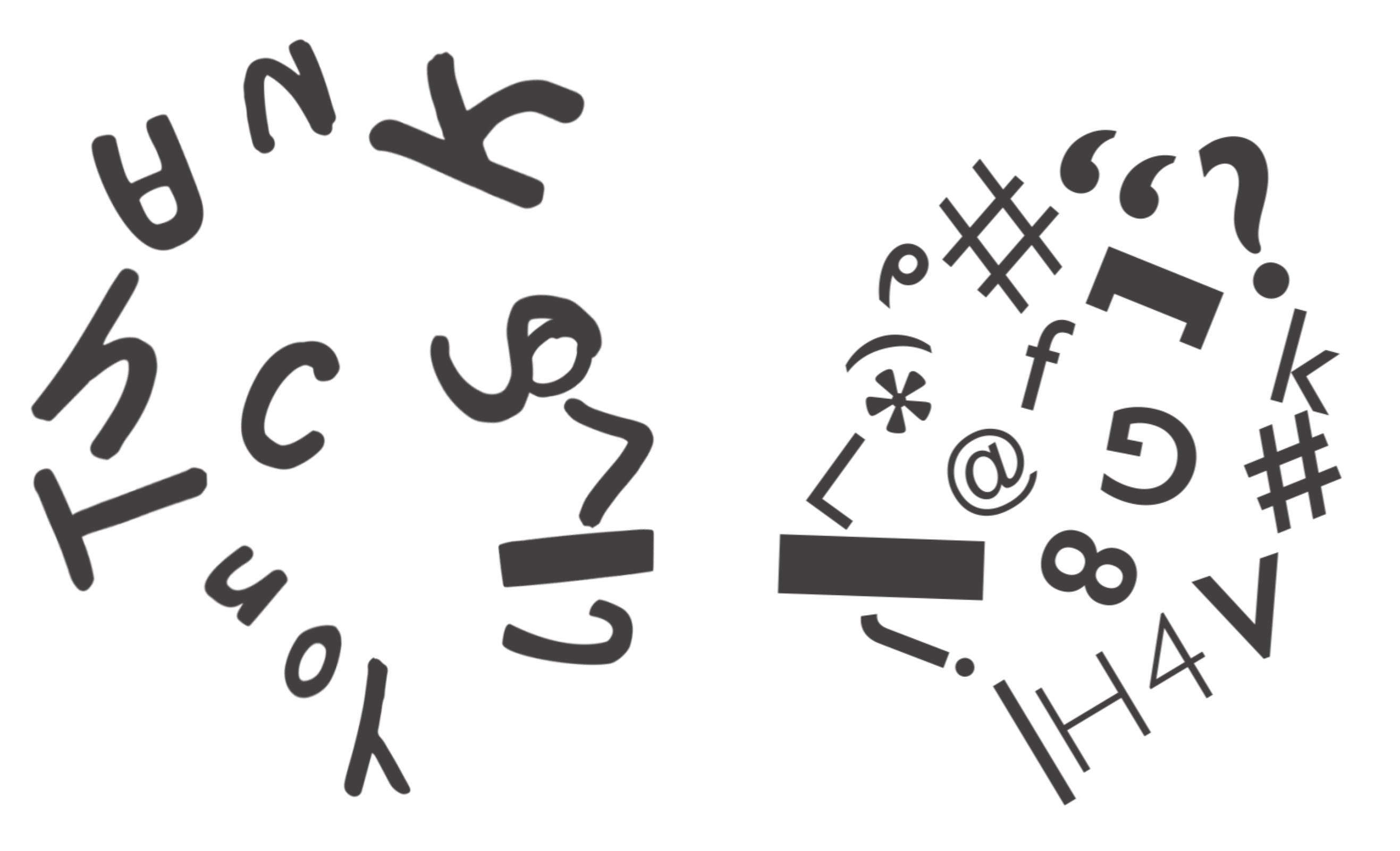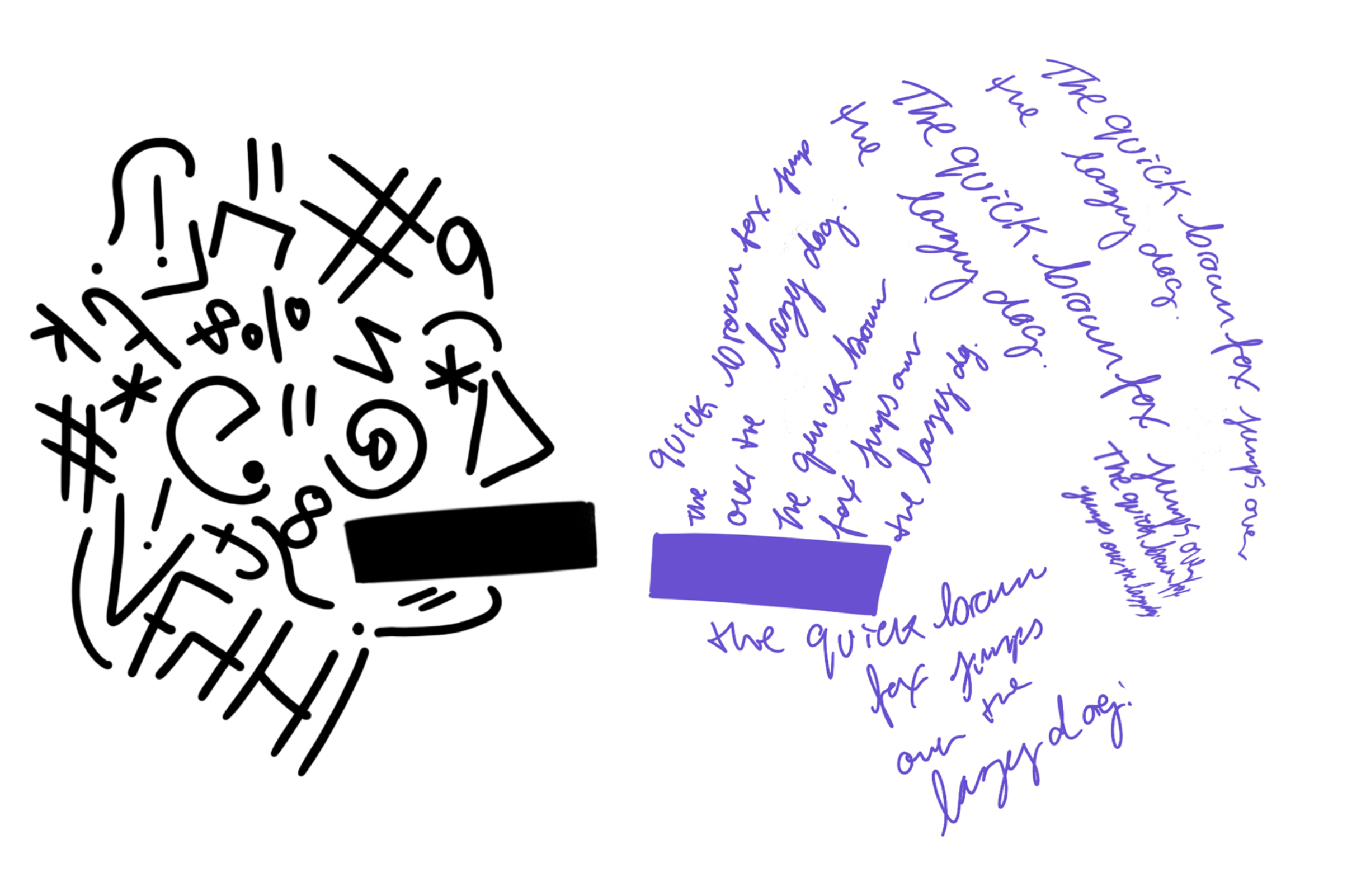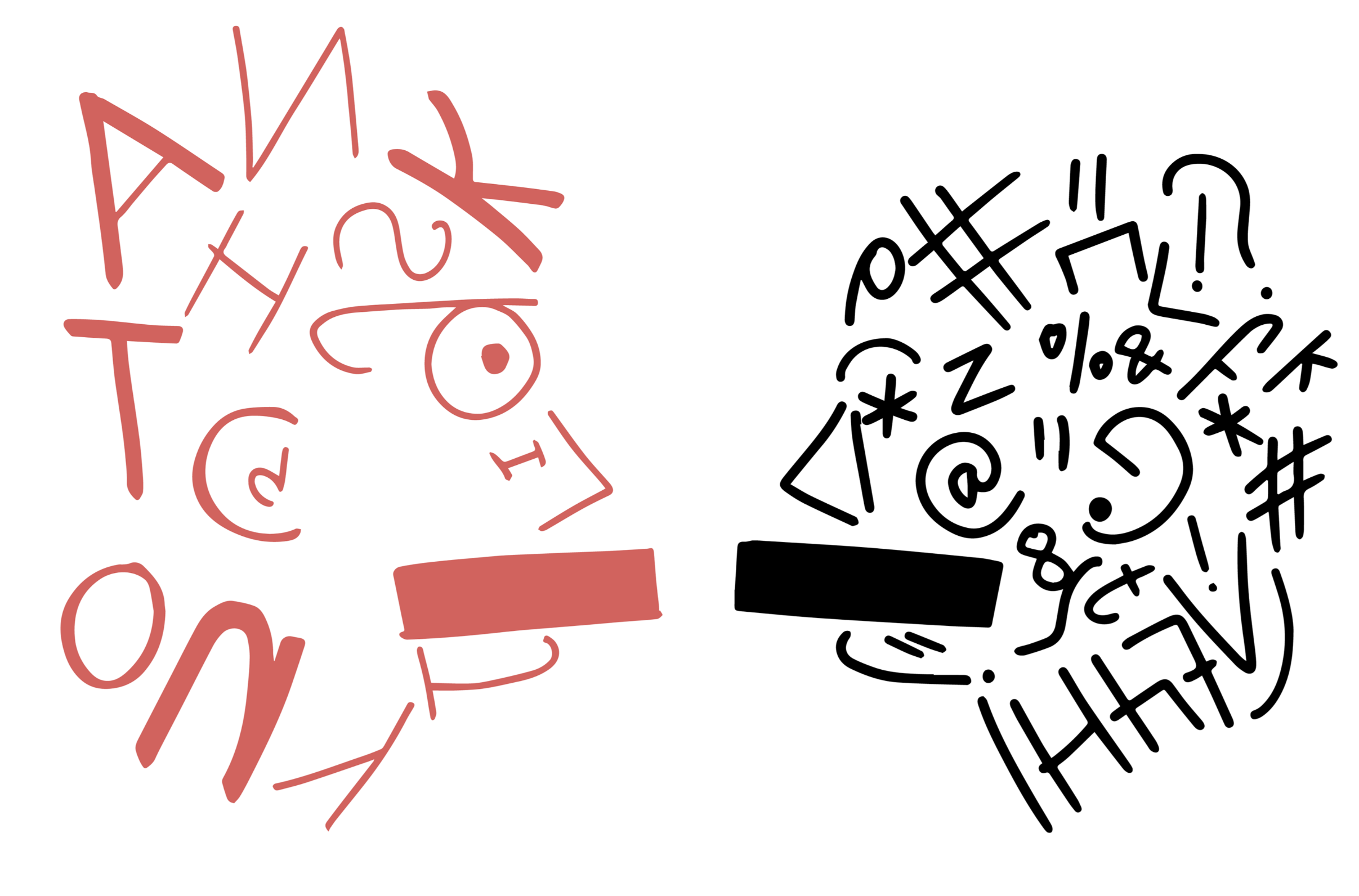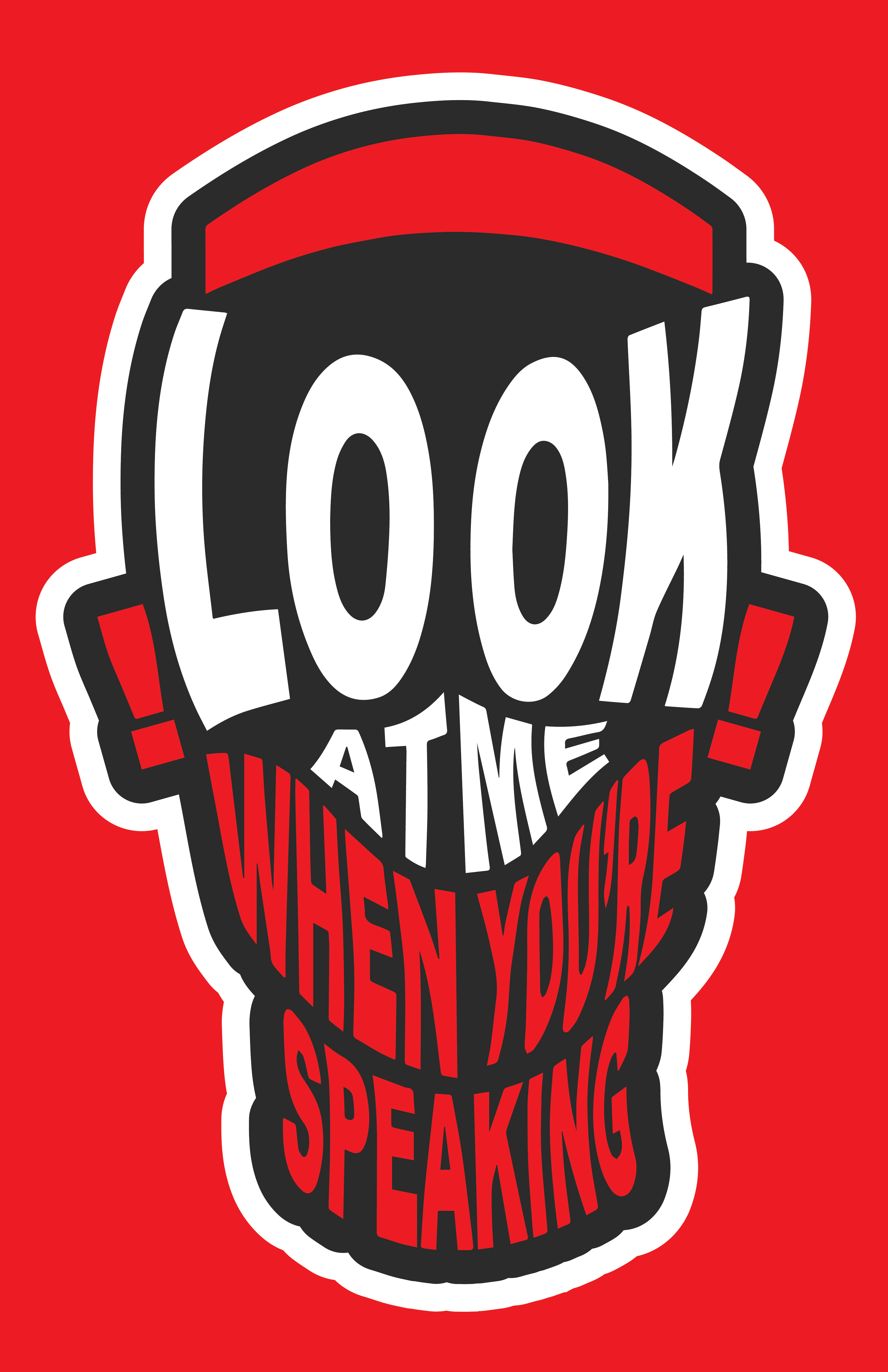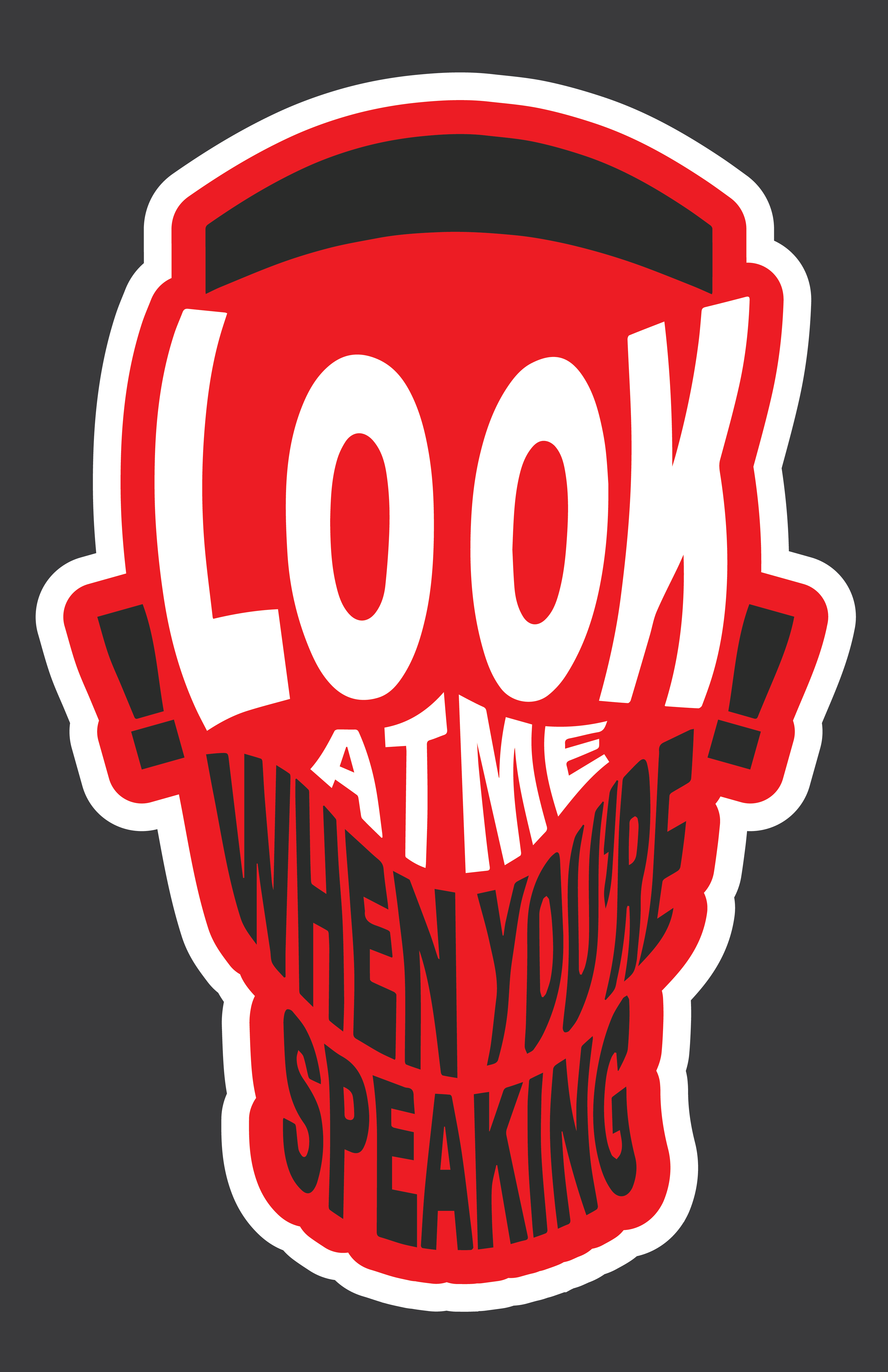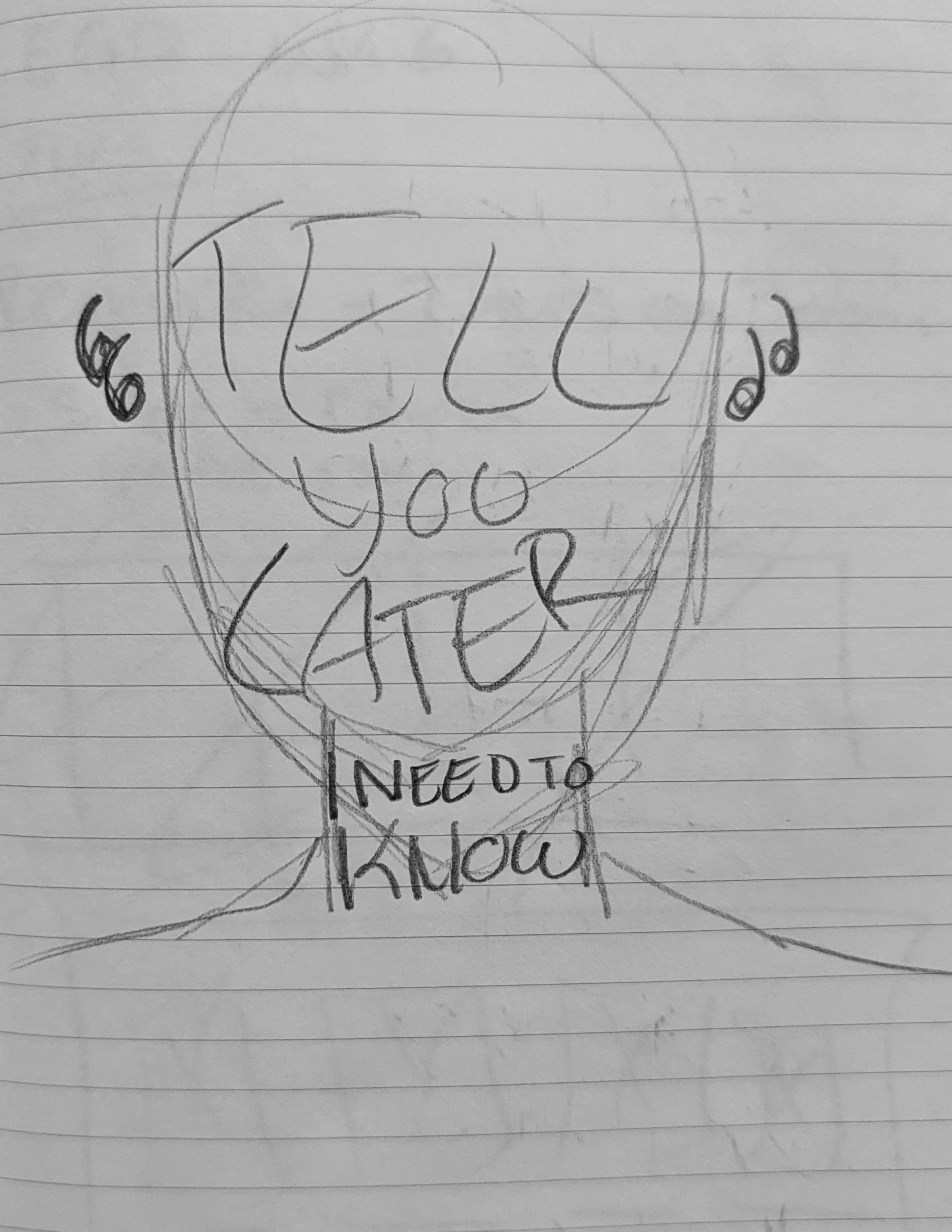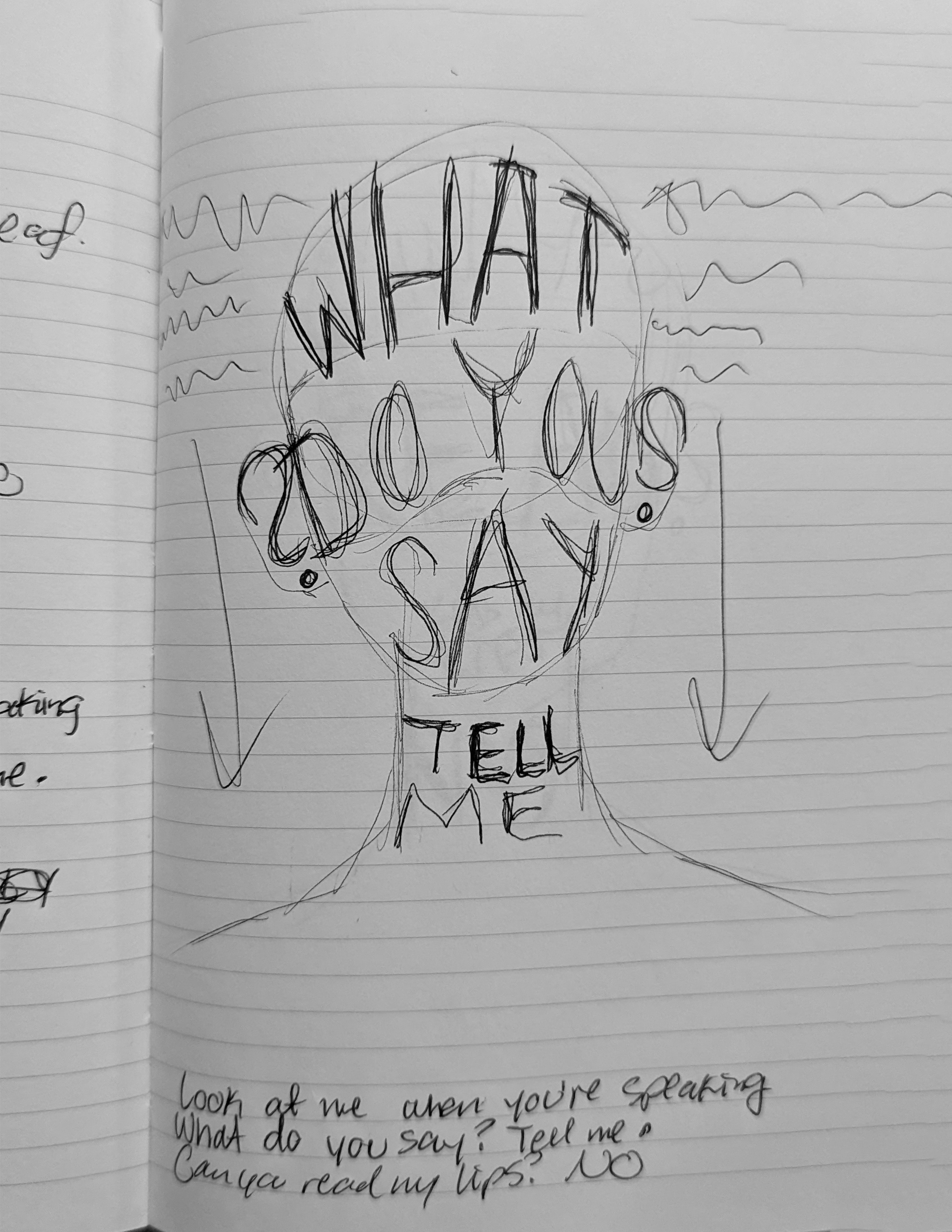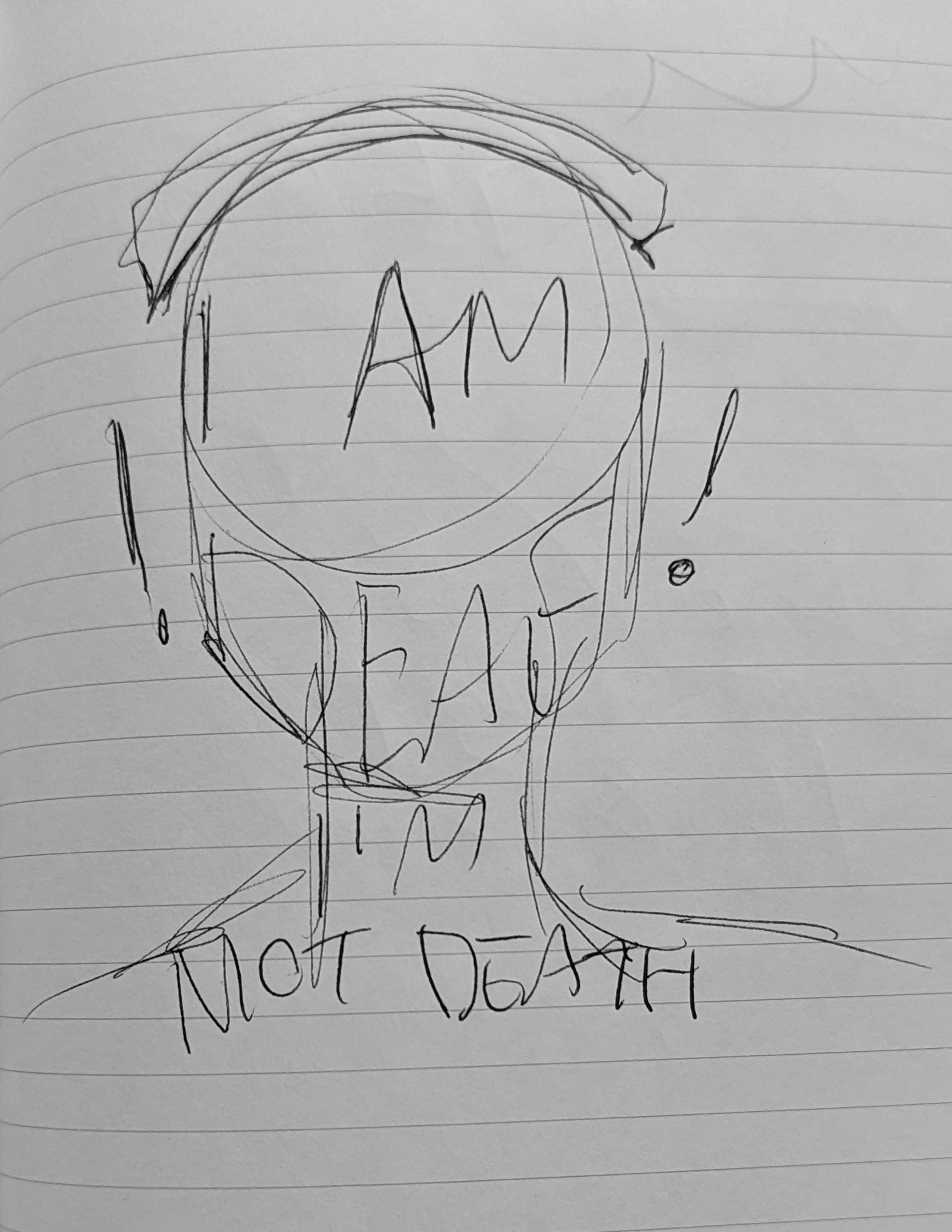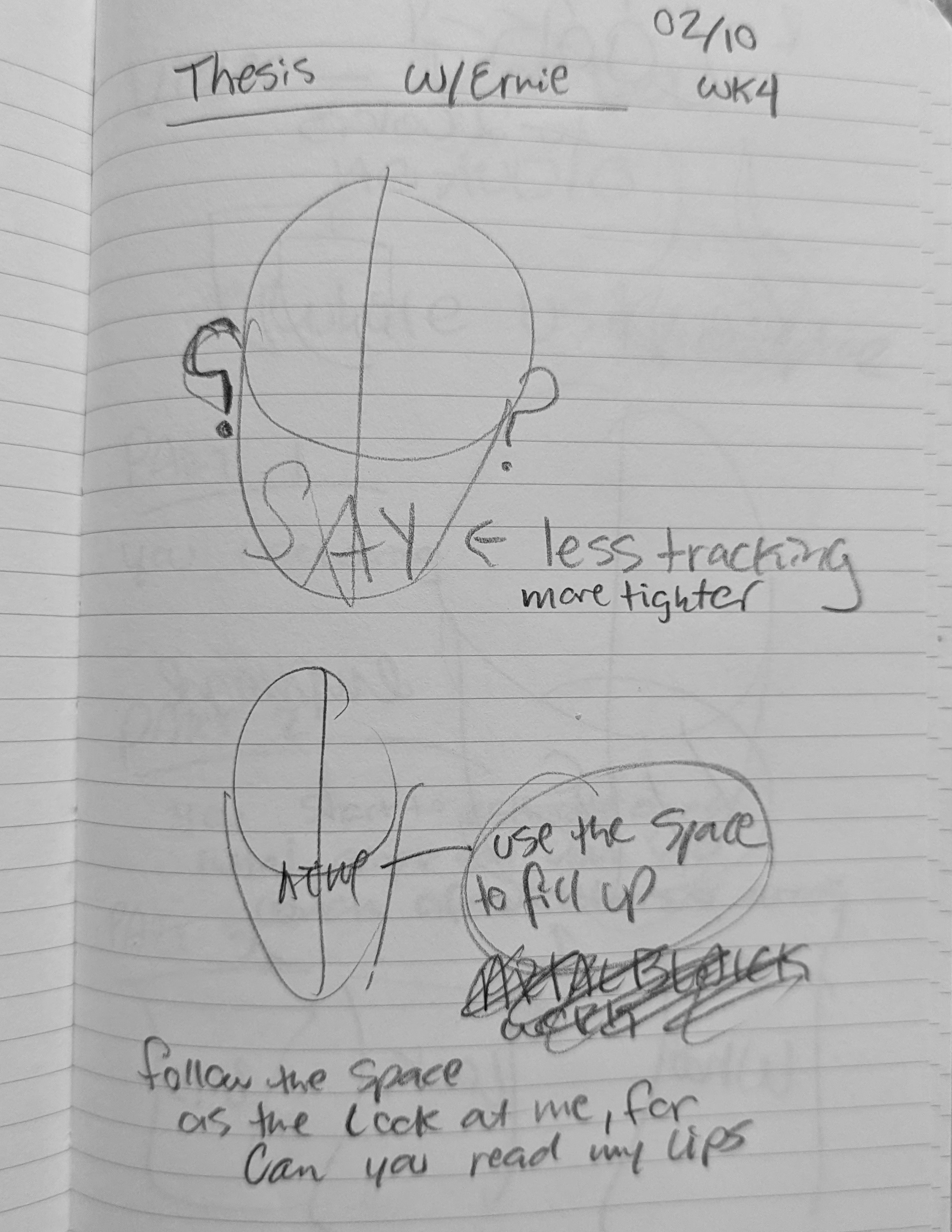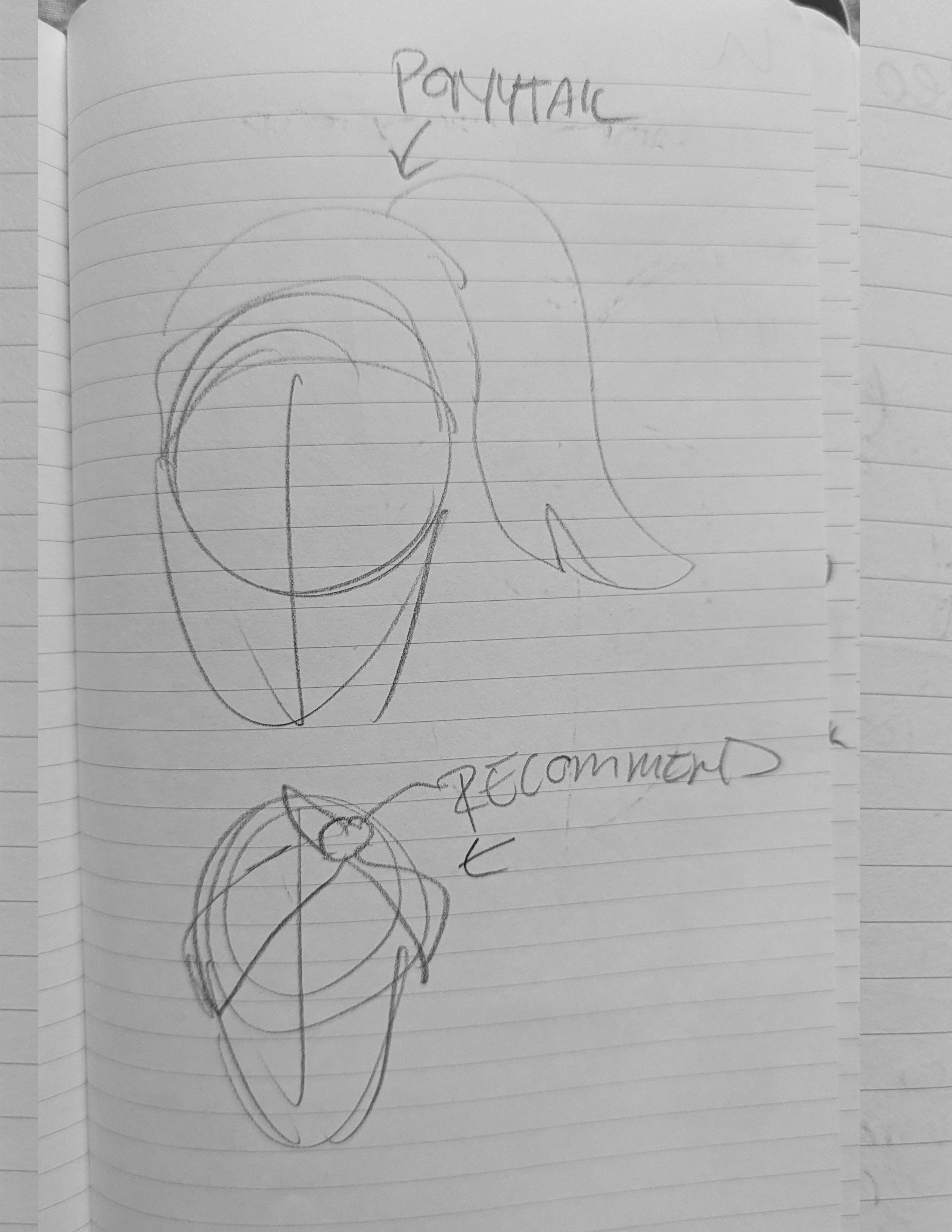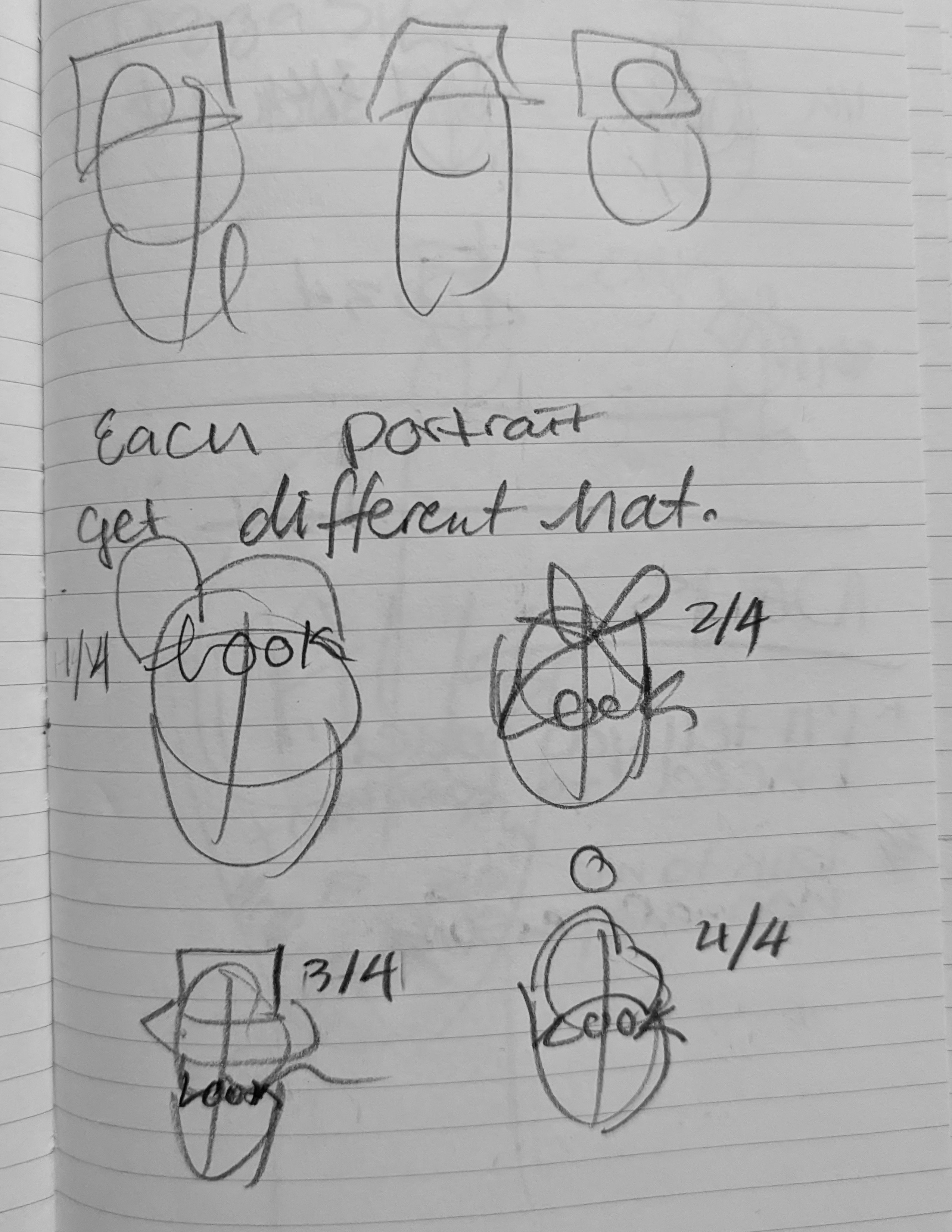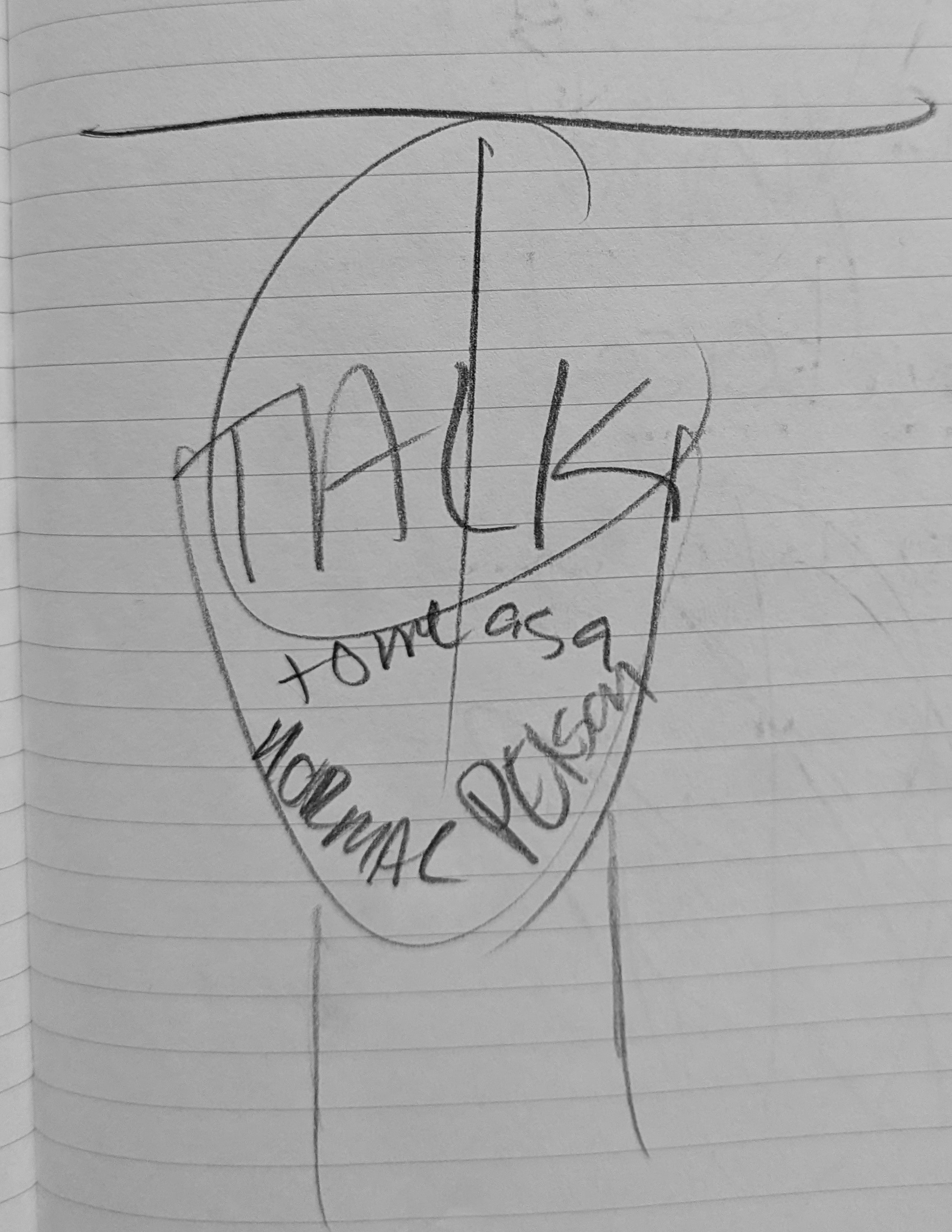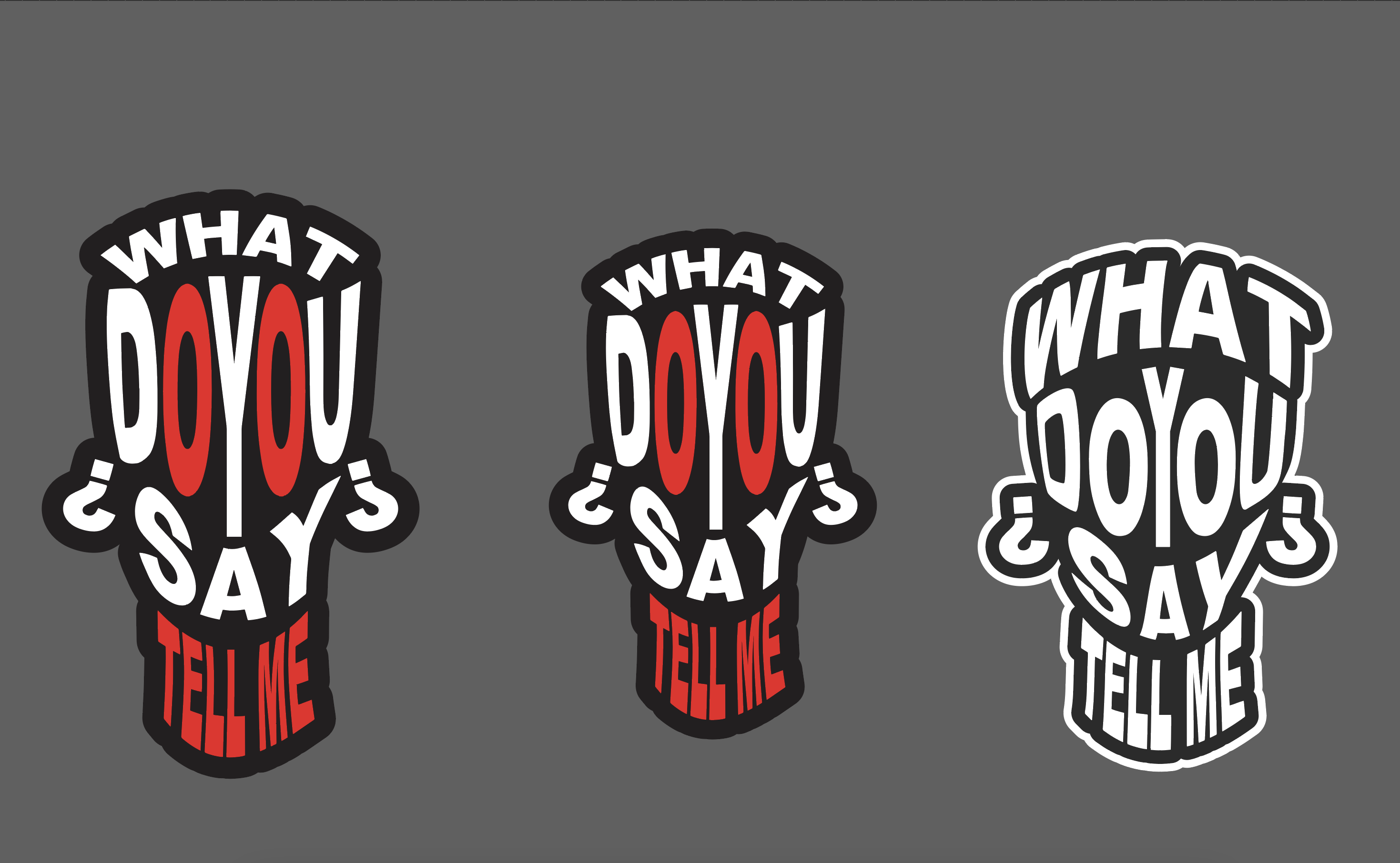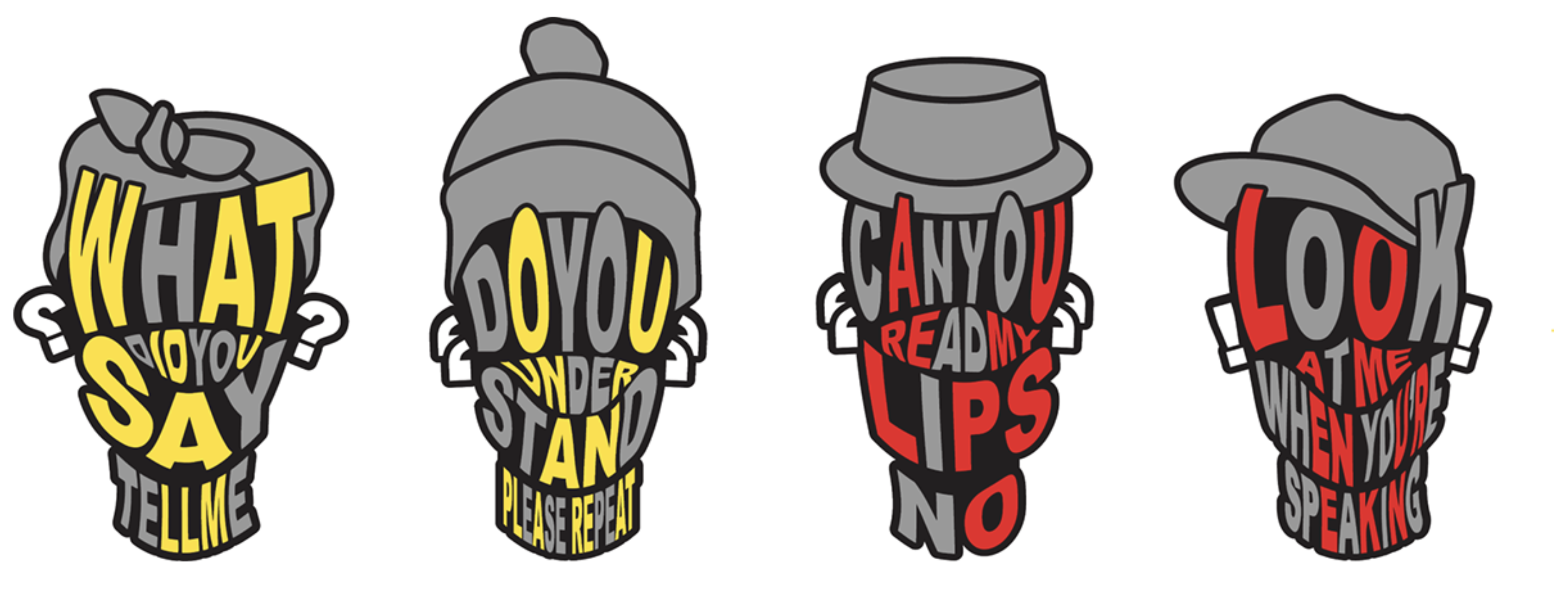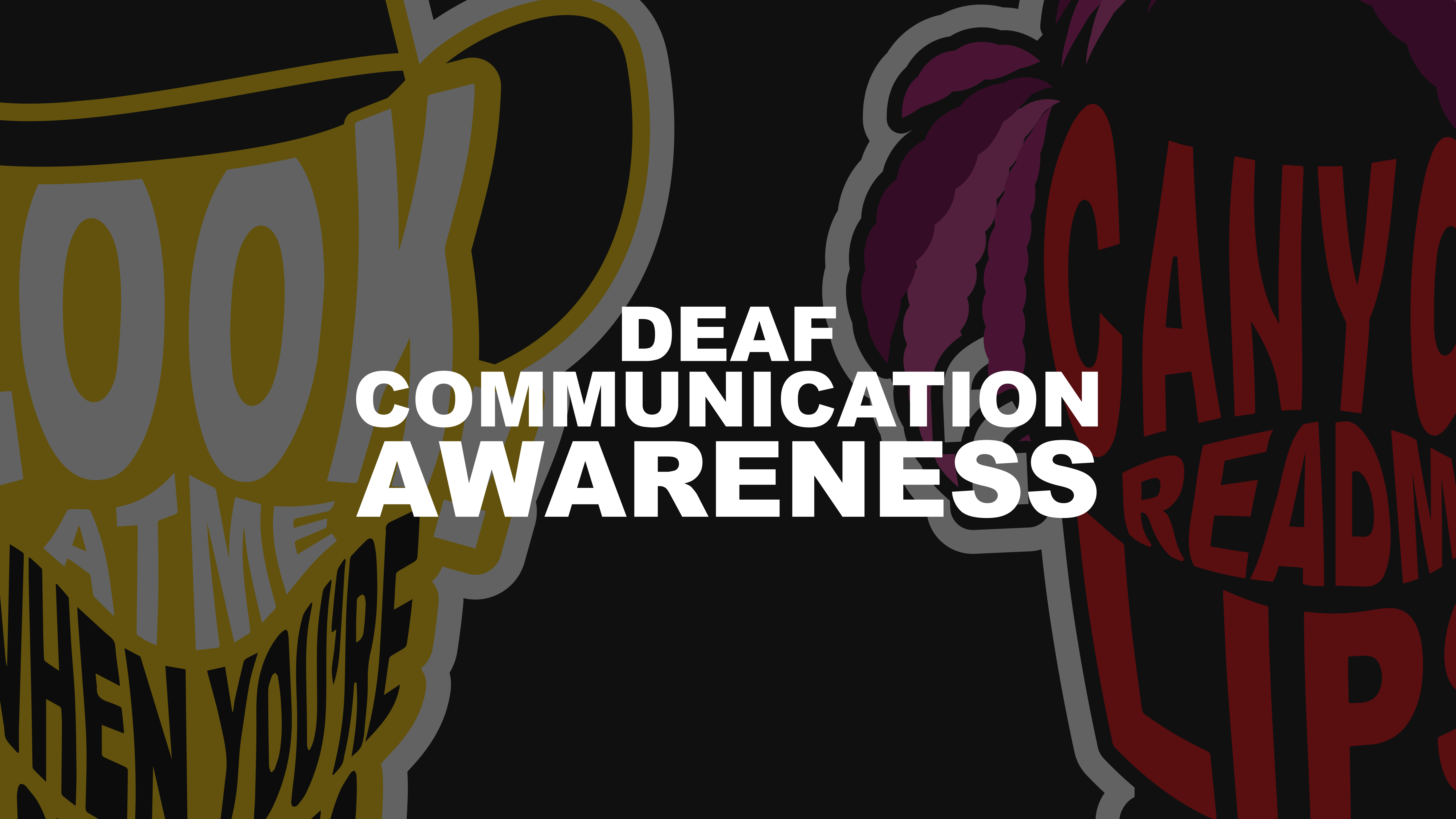
DESIGNER Emily Grace Amponin
PROGRAMS Adobe Illustrator, Adobe After Effects
COMMITTEE Mike Strobert, Adam Smith, and Ernest Roszkowsi
Timeline January - April 2023
COMMITTEE Mike Strobert, Adam Smith, and Ernest Roszkowsi
Timeline January - April 2023
THE PROMPT
The D/deaf and Hard-of-Hearing people had to work harder, such as lip reading, asking to repeat, and assuming which words people were saying while conversing with people.
PROBLEM
People don’t understand or aren't aware of the experience and how difficult for D/deaf and Hard-of-Hearing people to deal with communication barriers.
SOLUTION
Design typography designs to capture people's attention. Use a point of view (POV) video to focus on communication from a deaf perspective. Encourage people to be in a deaf perspective and then try to understand the struggles while conversing.
TYPOGRAPHY PORTRAITS
Typography is shaped as faces while showing dialogues from the perspective of D/deaf and Hard-of-Hearing people when conversing with people.


Look at me when you're speaking!
D/deaf and Hard-of-Hearing people often look at people's faces to read the expressions or lips while conversing. However, people do not look at D/deaf and Hard-of-Hearing people; they glance away and become distracted by their surroundings while conversing in a noisy or quiet ambiance.
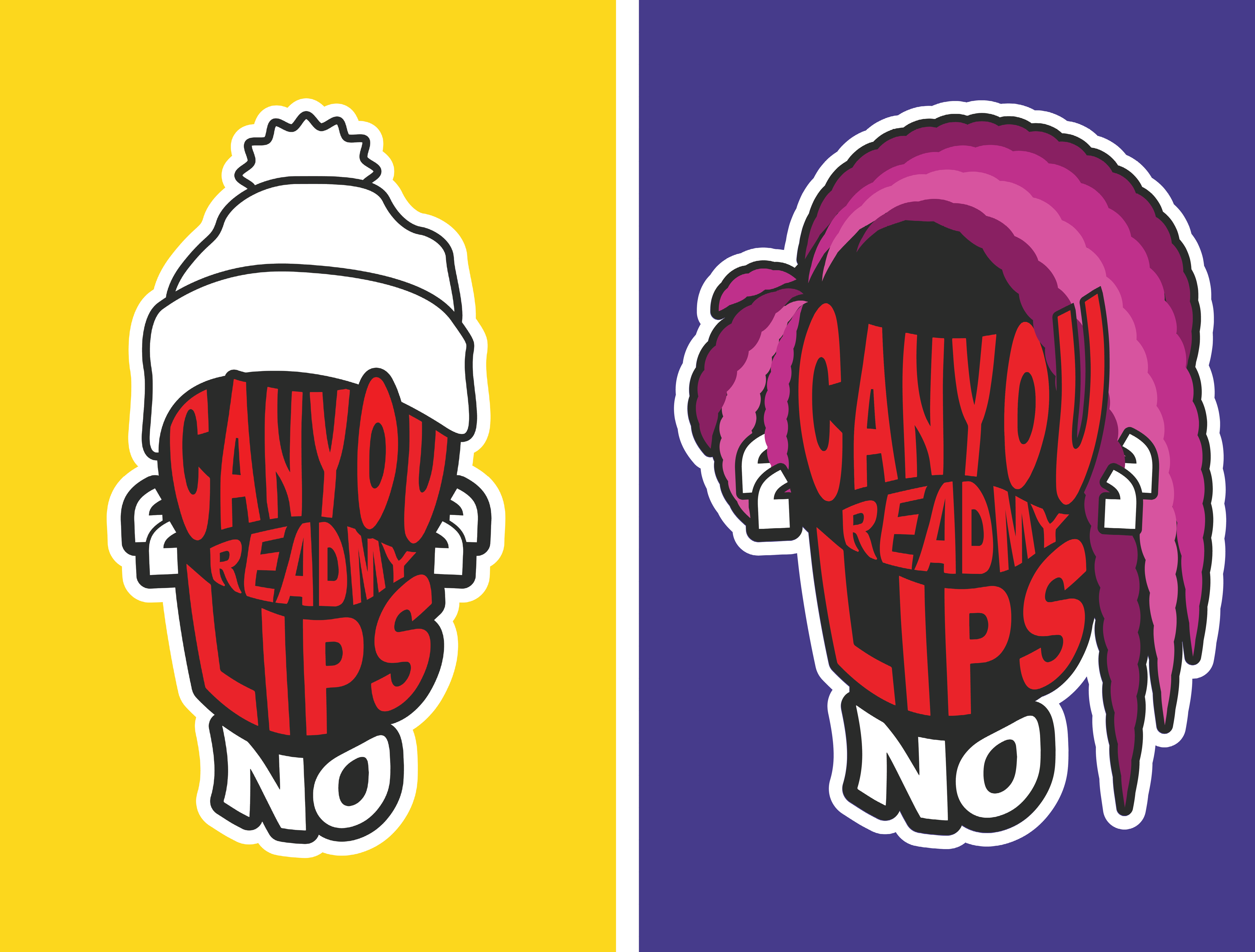
"Can you read my lips?" No.
People would assume a deaf person is an expert at reading lips. “Some deaf people can read lips (although studies have found that only 30 percent to 45 percent of what is said is generally understood), while others benefit from communicating via pro-tactile ASL” [Boston University, 2018]. Still, deaf people struggle to communicate.
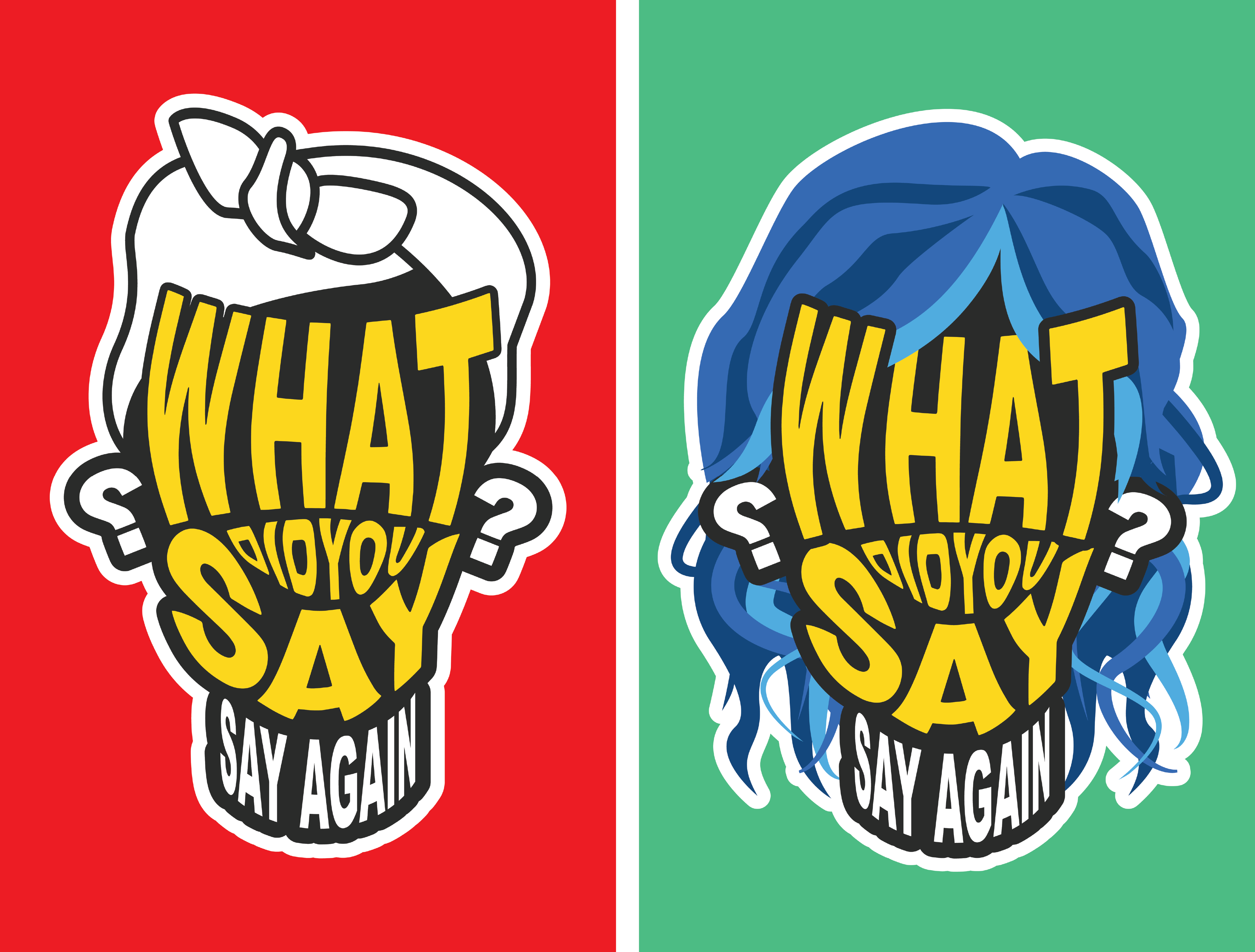
What did you say? Say again.
When Deaf and Hard-of-Hearing people have a conversation with people, they ask this question, "What did you say?" - they need to catch which word the people say. They ask to repeat so they don't miss the information from a conversation or want to ensure they understand.

"Never mind. Later" Tell Me.
They’re missing a lot, some, a few of information from the conversation. Importantly, they must know and feel they were part of the conversation. Deaf and Hard-of-Hearing people get left out, hurt, or face barriers whenever people say:
- “Never mind”
- “We will tell you later.”
- “It’s not important to know.”
TYPOGRAPHY PORTRAIT ANIMATION
Typography portrait animations behave as facial actions: eyes blinking and looking around, then mouth moving as talking.
A DEAF POINT-OF-VIEW
A deaf person interacts with siblings. But the deaf person struggles to converse with the siblings and needs to understand what's happening.
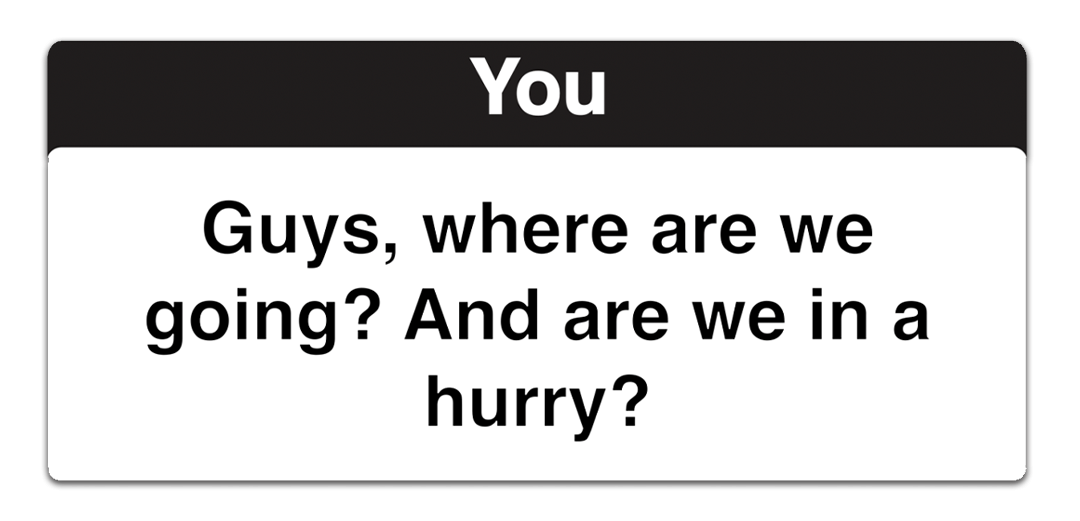
The grey boxes represent you in a deaf person's perspective while sharing thoughts or dialogues.
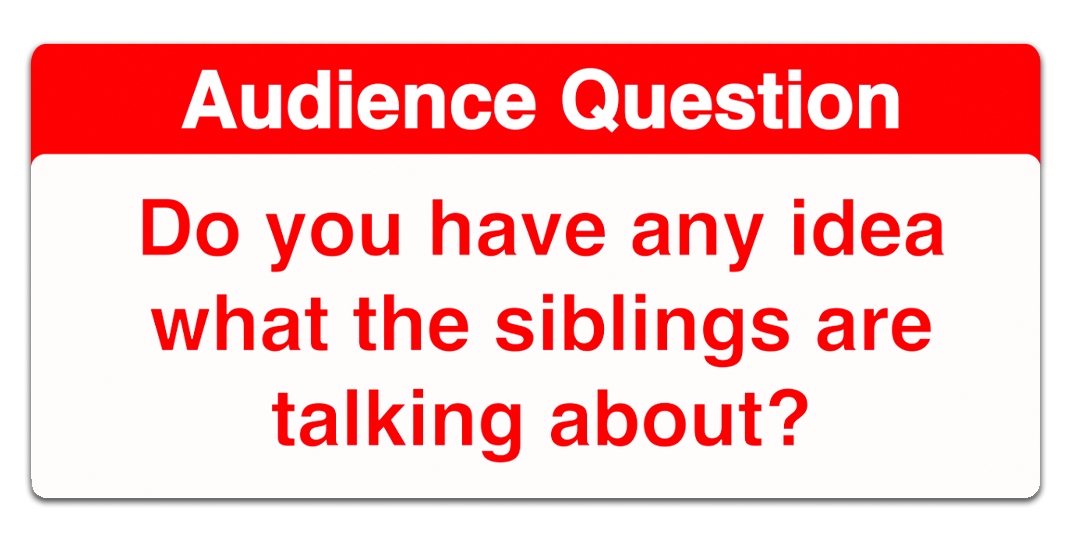
The red boxes represent Audience Questions to ask the viewers to answer these questions while watching the POV.
A Deaf POV Survey during IMAGINE RIT
During the IMAGINE RIT on April 29th, 41 people participated in my thesis survey as they watched my deaf POV. The survey did not require demographics.
Men, Women, children (young to teenagers), and senior citizens got to experience and understand the emotions that the D/deaf and hard-of-hearing people felt while conversing.
Photos of IMAGINE RIT credits to two ASL interpereters: Melissa Van Hall and Beth Harris
Conversation with participants

The typography and conversations with me influenced visitors and participants; they looked at me instead of looking at the ASL interpreters and not having to say, “can you tell her?” They talked to me as a normal person.

Another participant realized he missed so much information then he asked me for the actual conversation between my siblings. He wanted to think about and make sure the people he talked with got a good amount of information.

One of the 41 participants– a teacher at an elementary school, told me about telling her students to be aware of communication between them and deaf people.
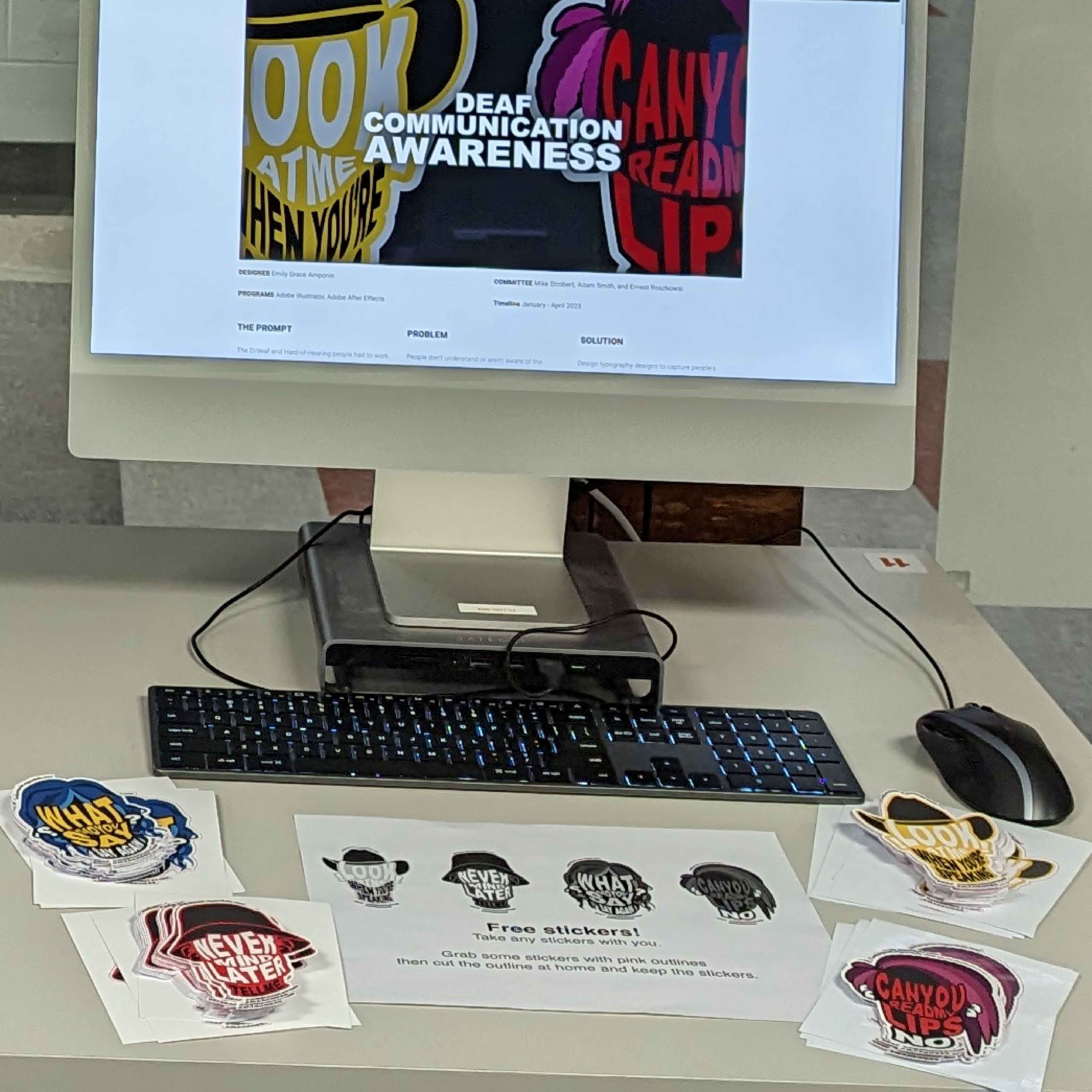
The Typography Portraits Stickers
After conversating with the participants about the communication and participants finishing the deaf POV or looking through the page, they took 1 to 4 stickers.
Their actions showed me that they were impacted or influenced. Two of the four stickers were the strongest: Look at me and "Never Mind. Later."
The Typography Portraits Posters
Process
Psychology Color Negative Emotions
Deaf or Hard-of-hearing people experience conflicted or negative emotions such as frustration, aggression, loneliness, irritability, and resentment.
They get tired of facing these dialogues and being left out.
Red Aggression and Frustration
Yellow Aggression and Irritability
White Emptiness and Barriers
Black Depressing and Negativity
Early Development
In the early spring semester of 2023, I went through several experiments with typography that could represent a deaf person. The lip shape typography was getting to the point that I had imagined in my mind while it had a similar style as the typography portraits.
The typography of two people: Thank You and gibberish, was ineffective. The design wasn't the accurate as I wanted it to have, representing a deaf person.
Two square posters of typography "What do you say? Nothing. I'll tell you later," filled with actual conversation transcripts in the background weren't working well– it was not meaningful or showing emotions. It had no empathy connection with a deaf person.
Typography Portraits Development
The lips typography was closer to what I expected, while it had a similar style to the typography portraits. In order to make the lips effective, combine the lips' dialogues with the typography portraits.
I experimented with the typography with sketches to visualize the dialogues from a deaf person's perspective.
Adding the hats and hair was effective, and these aspects gave the typography portraits personalities.
Storyboard for the Deaf POV
I reached out to my triplet siblings in the Chicago suburbs and discussed on a Deaf POV since these two grew up and understood my struggles.
Having my brother talk while his lips were not clear to read was a good decision; that caught the viewers' attention to realize the lips weren't always clear in the Deaf POV video.
My sister understood the annoyance of seeing any person who was talking while looking anywhere instead of having eye contact. She was willing to imitate the action.

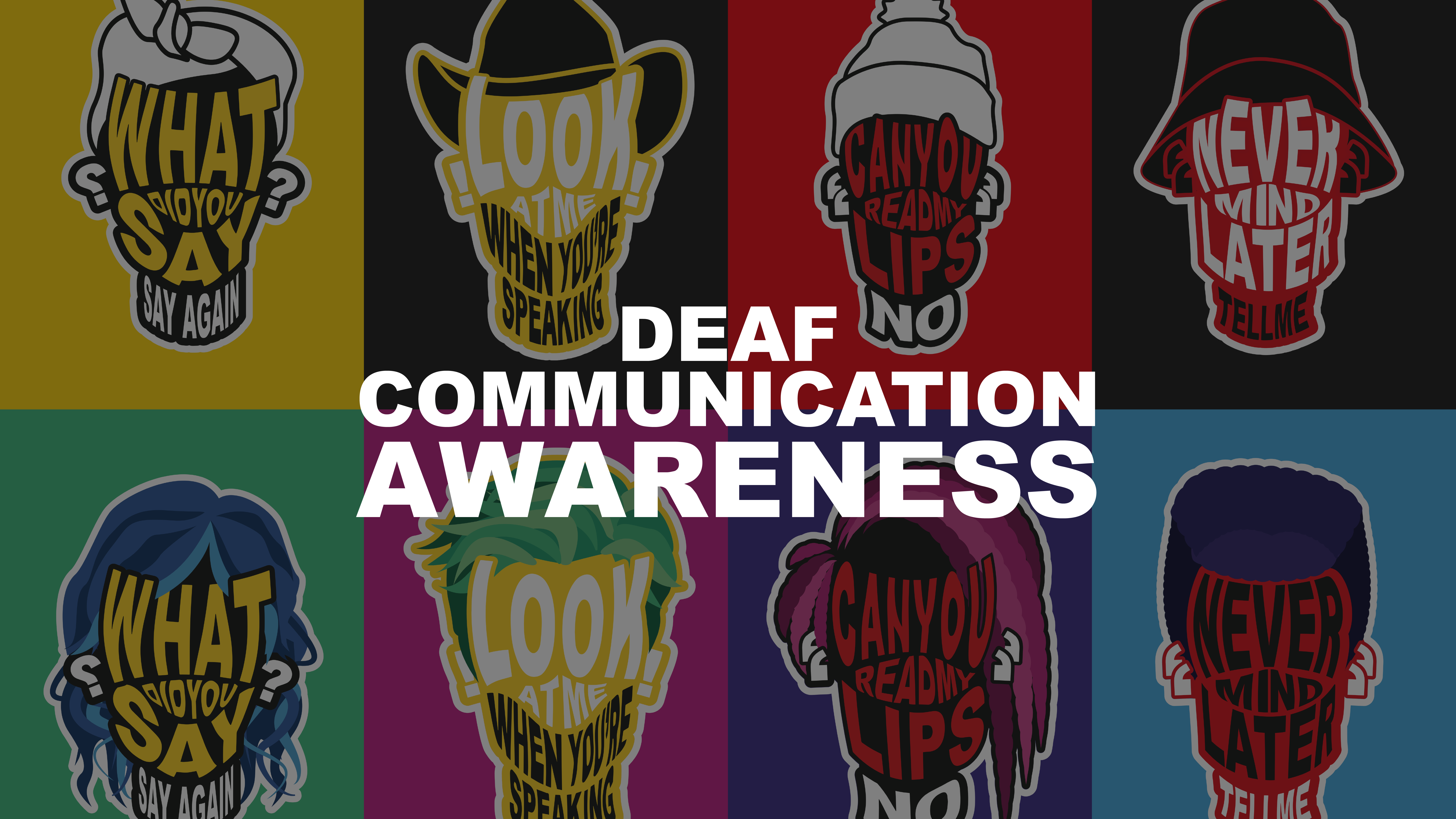
Thank you for viewing!
Designer
Emily Grace Amponin
Let's collaborate and reach out!
emi.amponin@gmail.com
Portfolio
emilyamponin.myportfolio.com/

